

Essay on Culture of Sikkim in English
Essay on Culture of Sikkim in English , India is a nation, full of culture and tradition. Every state has a different culture and tradition. In this post, we are going to talk about the culture of Sikkim in detail. Let’s read out: Sikkim has different religious customs and traditions as there are people of different communities living there. The people of Sikkim are simple and friendly with natural happiness.
This place entices a lot of travelers from different parts of the world. It is due to the fact that Sikkim was known as the Switzerland of the East. It is one of the most popular places, where millions of people visit and enjoy a lot. It is a hilly state situated in northeastern India.
Sikkim is the 2nd least populated state in India. Different tribes and communities in Sikkim have their unique features along with their specific dance forms, languages, culture, and craft forms. The culture of any place is described through its people, cuisine, language, religion, art, music, and dance.
The same is true for Sikkim. The people of this place are more commonly known as the Sikkimese. During prehistoric times, the state of Sikkim was employed by their tribes including Chang, Naong, and the Mon.

Essay on Sikkim in English
When it comes to the primary language of Sikkim, it is Nepali while other languages like Sikkimese or Lepcha are also spoken by people in some parts of this place. People also use English. There are some other languages, which may be used by people in Sikkim are Yakha, Kafle, Majhwar, Limbu, Tibetan, Sherpa, Tamang, etc.
Its culture is also defined by the cuisine it has. The food of this state is a combination of Nepal, Bhutan, Tibet, and India. It mainly includes Gundruk, noodles and Sinki soups, tomato pickles, thukpas, fermented soybean, traditional cottage cheese, bamboo shoot, and many other fermented dishes that owe to its very cold climate. The staple food of this state is rice. People of this state also like momos and wantons.
Talking about the non-vegetarian food of this state, it is pork, beef, and fish. Boiled and steamed food items are mainly found here with fewer amounts of masalas. Food items are infused with local spices and herbs. People of this state mainly like to have some drinks while having food such as whiskey, local beer, and rum.
In Sikkim, people grow a wide range of crops like finger millet, barley, buckwheat, wheat, potato, soybeans, and many others. Fermentation is the most important process used here because people preserve different kinds of non-seasonal vegetables to be used in other seasons. This is the most common traditional thing to be found here.
Paragraph on Sikkim
Here, many festivals are celebrated throughout the year. Here, people follow Buddhism. This is the main reason festivals celebrated in this place are linked to Buddhism. People celebrate all festivals with excitement and happiness. They follow the Buddhist calendar to celebrate festivals. There are Monasteries or Gompas in Sikkim, where many festivals are celebrated. People of Sikkim take pleasure in lively and vibrant dance and music during these festivals.
Chaam is the most attractive form of ritual dance, which is performed by the Lamas. This ritual dance includes colorful masks along with brilliant musical instruments. To perform this dance, people dressed up with casually painted masks, sparkling jewels, and ceremonial swords, and danced to the beat of the drums, music, and horns. Here is the list of some popular festivals celebrated in Sikkim:
- Lhabab Dunchen Festival
- Losar Festival
- Bumchu Festival
- Phang Lhabsol
- Dasain Festival
- Losoong Festival
- Hee Bermiok Tourism Festival
- Tihaar Festival
The best part about Sikkim is that there are lots of religious or social celebrations or gatherings, where people cannot miss out on the chance to dance to the traditional music. People here lived in small bamboo huts.
Customs and traditions
People follow the Mahayana form of Buddhism in Sikkim. They celebrate the festival Saga Dawa, which is one of the most auspicious festivals in Sikkim. On this day of the special festival, people visit monasteries and worship while offering butter lamps. Lhabsol is another festival celebrated in Sikkim. Every 28th and 29th day of the Tibetan calendar, people in Sikkim perform the Kagyar dance.
This state is known for its appealing and dazzling beauty. Weaving is the popular form of occupation in this state. The oldest form of carpet weaving is present in this state, which is popular all over the world. Apart from that, they also make bags, woolen shawls, blankets, and many other things. The most special product of Sikkim is the Handicraft Choktse, which is a type of foldable table.
As there is a lot of creativity in Sikkim, this is the main reason why the government tries its best efforts to encourage people to do something better and unique for the betterment of the economy. The government has set up an educational center or institute in this state, which is related to the cottage industry.
The costumes of Sikkimese reflect the cultural and social lifestyle of the major communities. The major communities in Sikkim are Bhutia, Lepcha, and Nepali. They wear different kinds of costumes. This is how the diversity of people is found in the state. Some popular costumes worn by the Sikkim people are chuba, gho, and Bakhu or kho.
There are different dances people do in Sikkim. The major dances of this state are chhu dances Sikmari, snow lion dance or Singhai Cham, and many others.
In the end, we can say that Sikkim is a beautiful state, which is full of art and unique culture. This state is like an elegant bouquet that is adorned with a variety of amazing colors and the spirit of different flowers as attractive customs, folk dances, and unique cultures of different tribes and castes. The sparkling jewelry and swords add to the uniqueness of the cultural dance.
People from many different places both domestic and international are curious to explore the cultural and traditional beauty of Sikkim. This is why many tourists come to this place every year.
This is an essay on culture of sikkim, from this entire article, we cover information regarding sikkim essay in english. If found anything missing let us know by commenting below. For more info kindly visit us at wikiliv.com
Share this:
Leave a comment cancel reply.
Save my name, email, and website in this browser for the next time I comment.
Ad Blocker Detected!
"Advertisement"
Essay on Art, Culture, Festival, and Rituals of Partnering State | Essay on Culture of Sikkim

Hello Friend, In this post “ Essay on Art, Culture, Festival, and Rituals of Partnering State | Essay on Culture of Sikkim “, We will read about the Art, Culture, Festival, And Rituals Of Partnering state an Essay In Details. So…
Let’s Start…
Sikkim is not only the state of our country but also is the paradise of our country as well as the whole world. Its natural beauty is unbelievable. It is a unique blend of different religious customs and traditions of different communities.
“ Attracts a lot of minds of tourists,
Sikkim was called Switzerland of the east “.
Sikkim is the least populous and second smallest among the Indian states.
Sikkim is a paradise for nature lovers. tourists feel very relaxed here amidst snow-capped Himalayan peaks, plains laden with flower clusters bright colorful culture, and festivals.
Sikkim is a beautiful land of manifold tribes and races of people living together.
All these diverse tribes and communities have their unique features in addition to their particular festival, culture, language, and art forms.
“ Sikkim also shine like Kohinoor in the world for its culture “.
Art Of The Sikkim
The charm of this state is ever enticing and no one can abstain from its allure. the government of Sikkim is making constant efforts to keep the arts alive.
Keeping the idea in mind, the government has established the handicrafts and handloom institute, to preserve and promote traditional cottage art and craft of genius Sikkimese design.
Essay On Healthy Air, Healthy Planet In 500+ Words {Step by Step Guide}
Essay On Sikkim In English | Art & Culture | Tourism | Religion | Summary
सिक्किम पर निबंध हिंदी में | Essay On Sikkim In Hindi | Art & Culture | Tourism | Religion | Summary
Culture Of The Sikkim
Sikkim has a rich cultural heritage which is formed by the fusion of the tradition of Hinduism and Buddhism with the Lepchas.
Most dance is very famous here and is performed by the monks in the temple during a religious festival.
Sikkim people lived in a small bamboo hut.
The earliest inhabitants of the state namely the Lepchas are predominately Buddhist and Christian.
But however, before the introduction of these two religions, they believed in the bone, faith, or mune faith based on the spirits, good and bad for they prayed to the spirits associated with nature like mountains, rivers, and faith.
Festival Of The Sikkim
The majority of the people of Sikkim follow Buddhism so the festival celebrated here are associated with the Buddhists and them with a lot of pomp.
And as per the Buddhist calendar Maghi Sanskrit, Durga puja, Lakshmi puja , and Chaitra Dasai, Rama Navami, Dasai, Sonam Losung, Nomsuong, Tendong Halo Rum Phat, Losar (Tibetan New Year) are the major festivals include Sakewa (Rai), Sonam Lochar (Gurung), etc.
Conclusion:
Sikkim is a place with such beautiful scenery is definitely worth visiting. the snow-capped mountains and naturally flowing waterfalls of the Sikkim are very beautiful.
People come from far and wide to see, the beauty of this place. the sky, the mountains, and trees give us delight. For Reading More about this Essay Click Here .
Thanks For Reading “ Essay on Art, Culture, Festival, and Rituals of Partnering State | Essay on Culture of Sikkim “.
If any suggestions regarding “ Essay on Art, Culture, Festival, and Rituals of Partnering State | Essay on Culture of Sikkim “, So please comment.
Essay On Varanasi In English | Banaras Essay In English {Step by Step}
Leave a Comment Cancel reply
Save my name, email, and website in this browser for the next time I comment.
- Art & Culture
- Offbeat Travel
- Volunteering
- Nostalgiphilia
- Culture Directory
- Collaborate
Sikkim Festivals – The Cultural Beauty of the Mystic Land

- Cultural Festivals
- Indian Culture
- Northeast India
Table of contents
1. lasoong festival, 2. losar festival, 3. teyongshi sirijunga sawan tongnam, 4. maghe sankranti, 5. tendong lho-rum-faat, 6. bhumchu festival, other sikkim festivals.
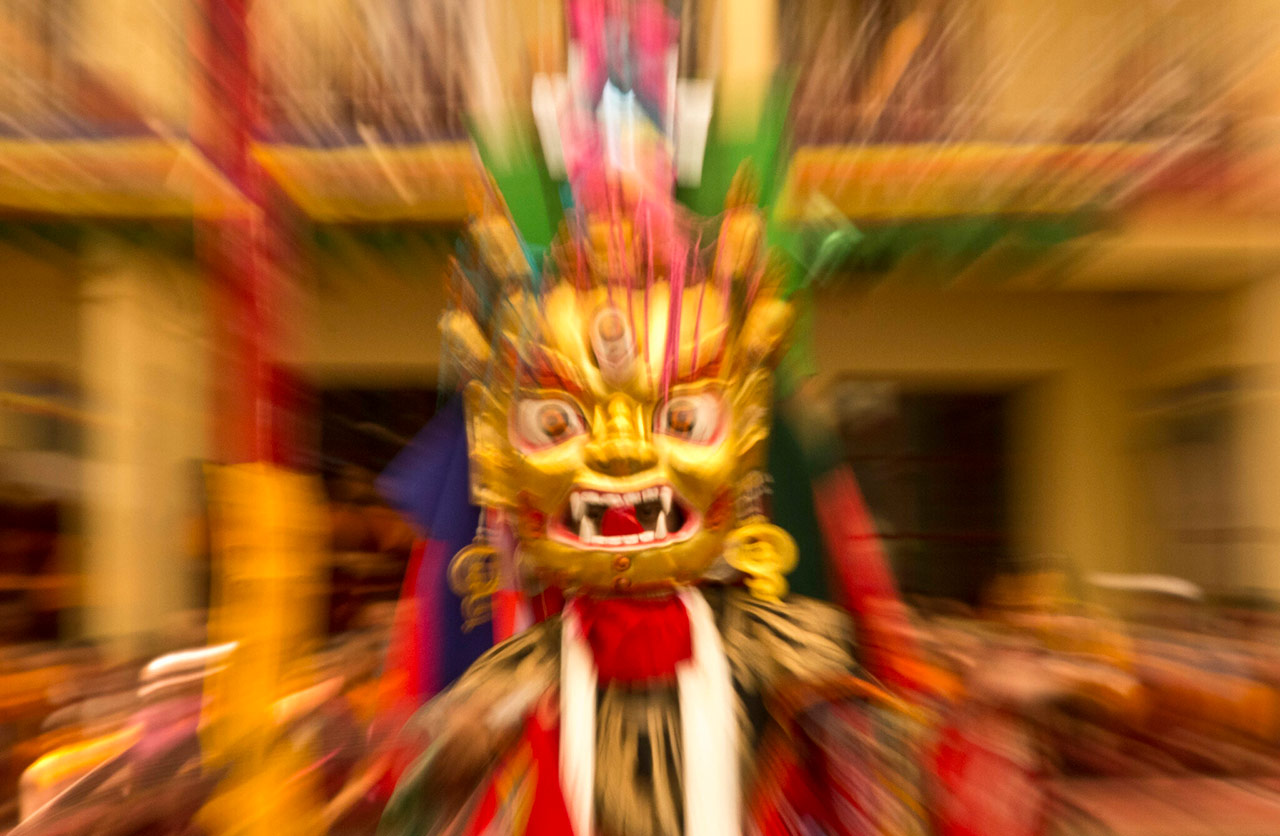
Sikkim, the Land of Peace and Tranquility, is home to Lepchas, Bhutias, and Nepalese. The sole brother of the seven sister states of India , blooming in the lap of Eastern Himalayas, Sikkim is not only thriving for its mountain walls, Day-Glo valleys, enchanting lakes, and sparkling waterfalls also in its multi-ethnic societal nature.
Ethnic diversity goes hand in hand with cultural and traditional variety, making Sikkim a kaleidoscope of culture . Indeed, people celebrate more than 21 premier Sikkim festivals and artistic beauty of the land of mystic and splendour and worship every wit of nature, from mountains to rivers to forest patches.
The Sikkim festivals are consequently categorically either social celebrations or religious festivals. The spiritual and social festivals are interlaced in most cases. Under religious festivals, the more isolated categorization is among Buddhist festivals and Hindu festivals . At the same time, the social celebrations of Sikkim are branched among the lines of tribal and ethnic diversity.
Let us travel to the world of Sikkim Festival, the cultural beauty of the land of mystic and splendour.
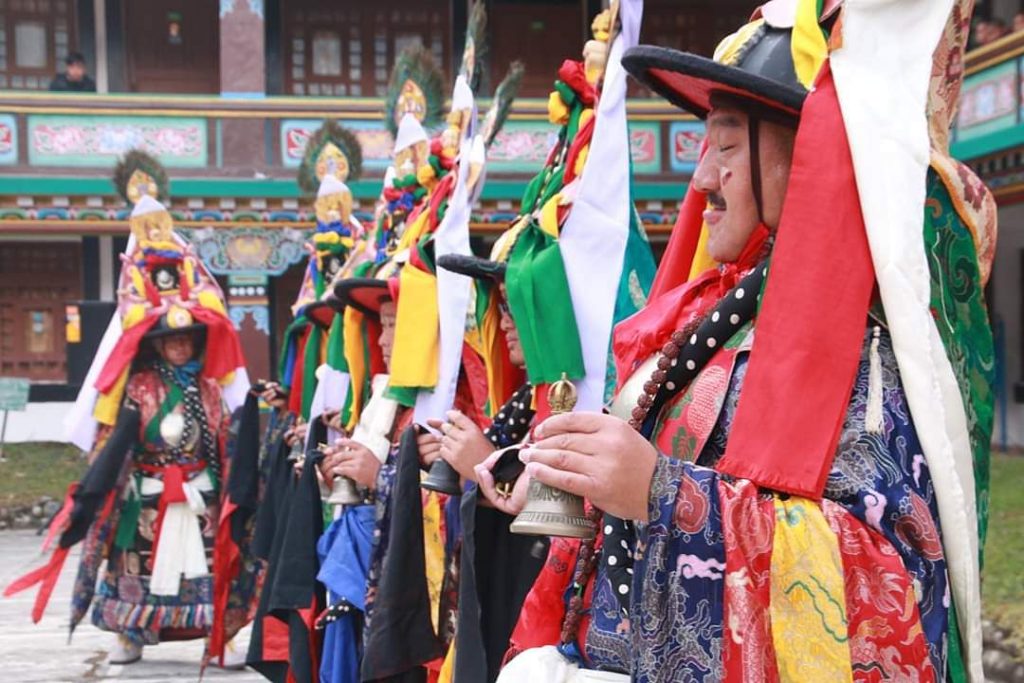
Blossomed as a social festival celebrated by the Bhutias tribe, it spread to the Lepchas community. Moreover, years later, Lasoong came to be one of the most solemn festivals in Sikkim, Darjeeling and Nepal .
Markedly, the Tibetan calendar perceives the 18th day of the 10th lunar month, December, in the Georgian calendar, as the Lasoong Day . Correspondingly, It coincides with the end of the harvesting season. The Sikkim popul ation observes it as the Si kkimese New Year.
The 4-day celebrations of Lasoong are incomplete without the Chaam dance in monasteries at Rumket, Phodong, and Tsuklakhang monasteries, followed by Archery competitions. The Lepcha community celebrates the festival differently.
The Namsoong festival (name of Lasoong festival in Lepcha community) begins with the priest Bongthing and Mun offering the Chi Fut to the Gods, followed by the Chaam dance (black hat dance), symbolizing the destruction of evil spirits and narrating the tales of Guru Padmasambhava. Later, at midnight, burning the figure of the demon king, Laso Mung Punu.
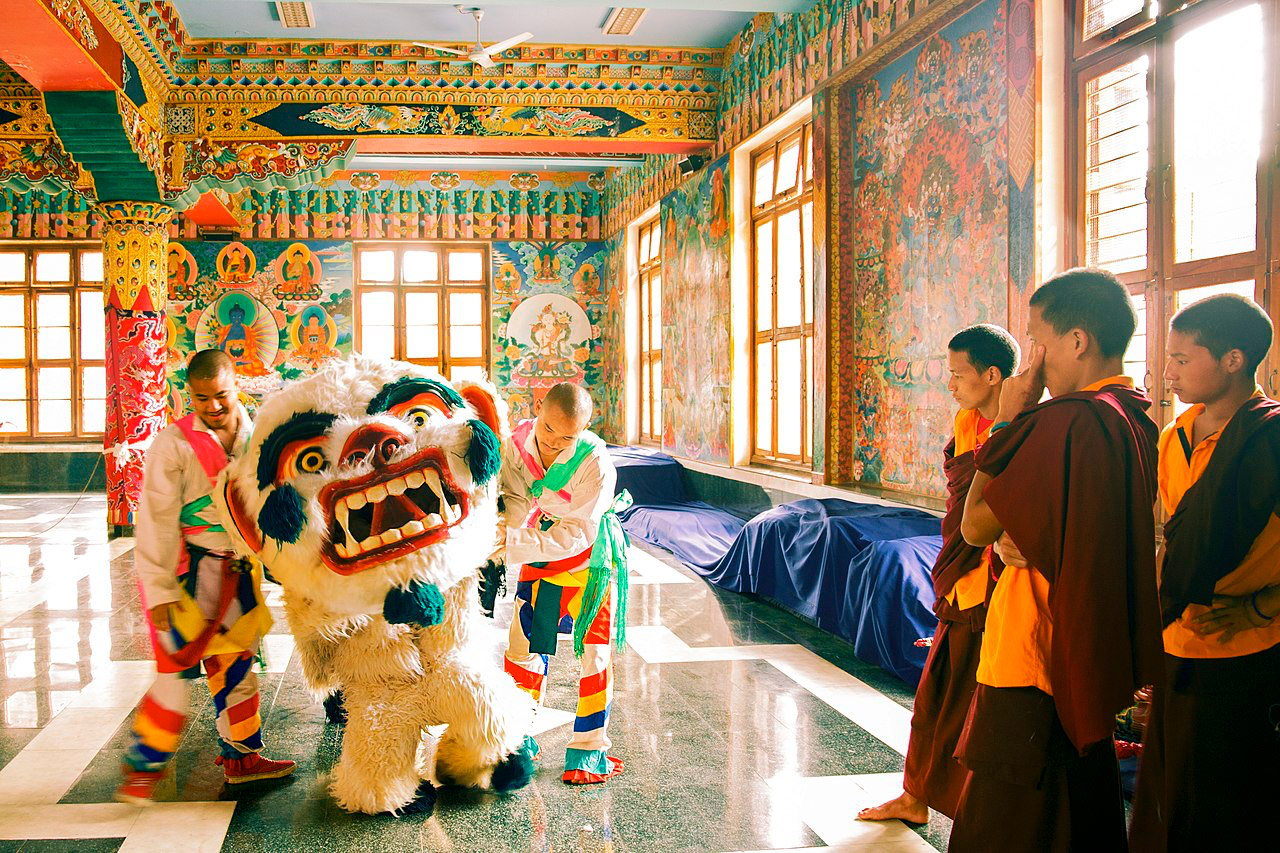
Buddhist communities like Sherpas, Tamangs, Gurungs and Bhutias celebrate Losar as one of the most civic religious festivals. In the Tibetan language, the term ‘Losar’ means ‘New Year’. The celebrations of Losar, the Tibetan New Year festival, continues for over two weeks. However, the first three days explicitly hold premier significance.
On the first day of the festival, Chango drinks are prepared using chaang. On Gyalpo Losar, the second day, people give gifts and blessings by greeting each other ‘Tashi Delek’. Furthermore, Yak dance and Sampa throwing by the Tibetan youth represent yet another distinctive feature of the celebrations in Sikkim.
A few days before the festival in January-February, the monks perform a gratitude ritual to please the water spirits, ‘Nagas’ and subsequently perform Lama masked dance in monasteries to exhibit victory of good over evil.
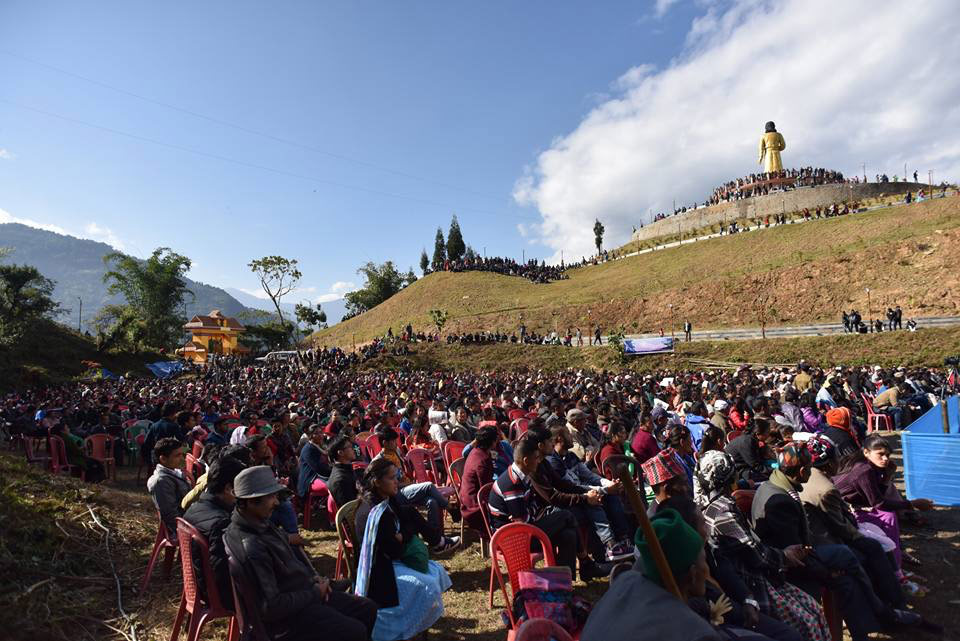
Teyongshi Sirijunga was a Limboo scholar of the 18th century who devoted his life to the revival of the tradition of the Limboo community, ‘Yuma Samyo’. The festival commemorates the birth anniversary of the legendary scholar.
In line with the Bikram Samwat (the official Nepalese calendar), communities celebrate the festival on the full moon day of mangsir month (November- December according to the Georgian calendar). Chiefly, the Limboo tribe celebrates the social festival as a momentous fest, particularly in West Sikkim.
The first aim of the fair is to pay tribute to the sacrifice of the disciples of Teyongshi Sirijunga and homage to his motive of cherishing the Limboo culture.
The community performs various cultural performances and award ceremonies, preceded by the traditional puja ceremony in the morning. The cultural performances vividly involve the Limboo folk dance and musical presentations, while the award ceremony celebrates the achievements and contributions of prominent Limboo personalities in vivid fields.
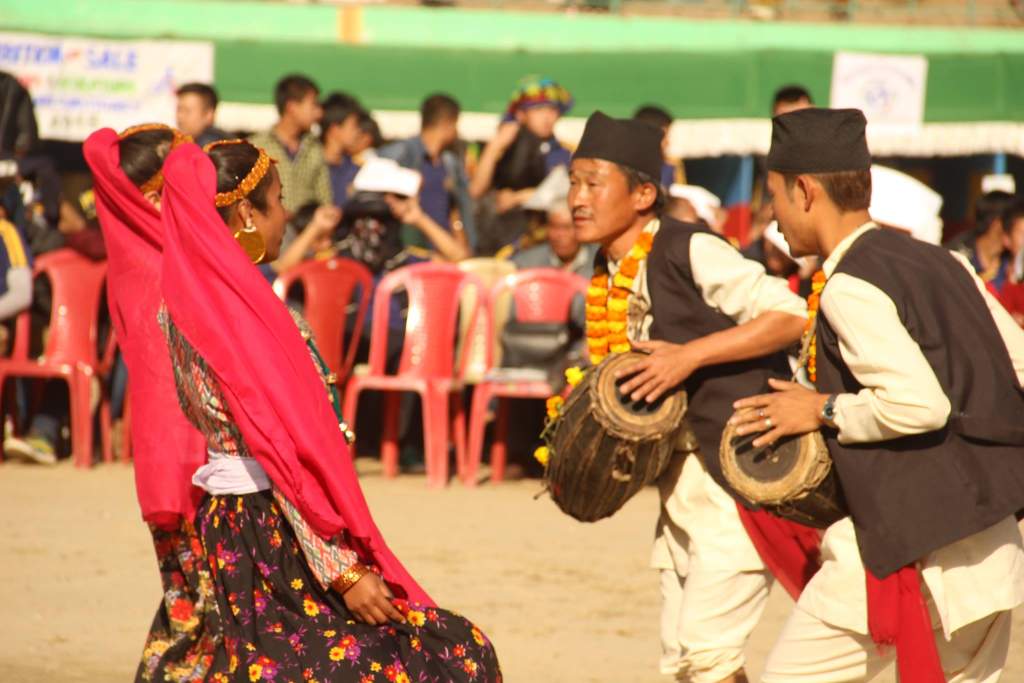
The Nepalese community in South Sikkim celebrate Maghe Sankranti, the three-day religious Sikkim festival, on 14th January. Maghe Mela distinctly marks the celebration, revealing its origin from the 1955 agricultural fair of Jorethang.
According to the Hindu lunar calendar, the celebration marks the beginning of spring , the sacred month of Magh. Sikkimese and Nepalese cultures regard it as the sun’s ‘holy phase of tr ansition’ to the Capricorn zodiac s ign.
The festive day ushers in the religious ceremonies performed on River Rangit and stream of Triveni of Teesta. The festival promotes diversity and cherishes the unity and brotherhood in the state.
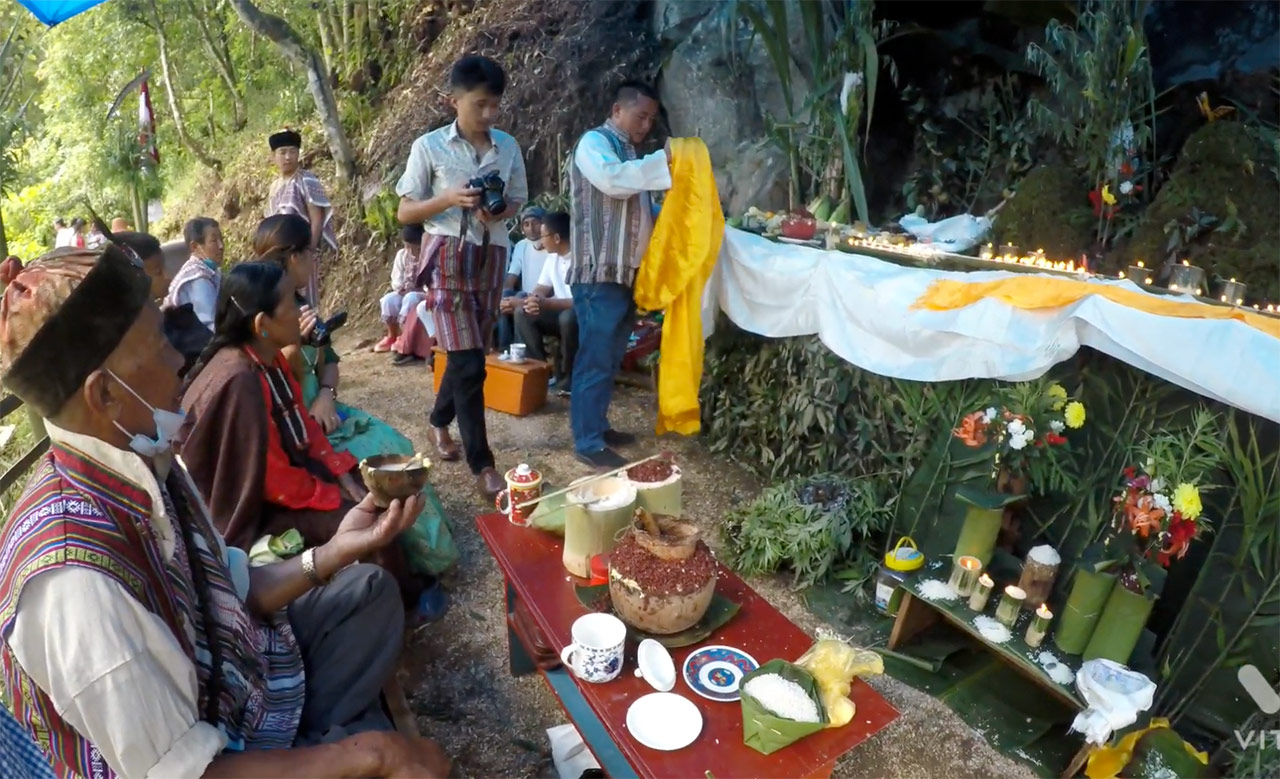
Tendong Lho-Rum-Faat, titled ‘The Ancient celebration’ in Sikkim, owes its origin in the ancient tales glorifying the rescue of the Lepcha tribe from a veritable flood that hit the Mayel Lyan country (present, Sikkim), lasting for 40 nights.
In the devastating event, the sacred Tendong hill served as the saviour. The Lepcha community worships the Tendong hill at Namchi as ‘the hill of the raised horn’. It is a 3-day festival, celebrated in July-August.
Trekking excursion is the memorable highlight of the festival. The Lepcha community shows close knit-ties with their tradition. Thereupon, during the festivities, the people of the Lepcha community use nine religiously precious stones to prepare the model of the mountain. People of the congregation worship these models placed at the façade of each house.
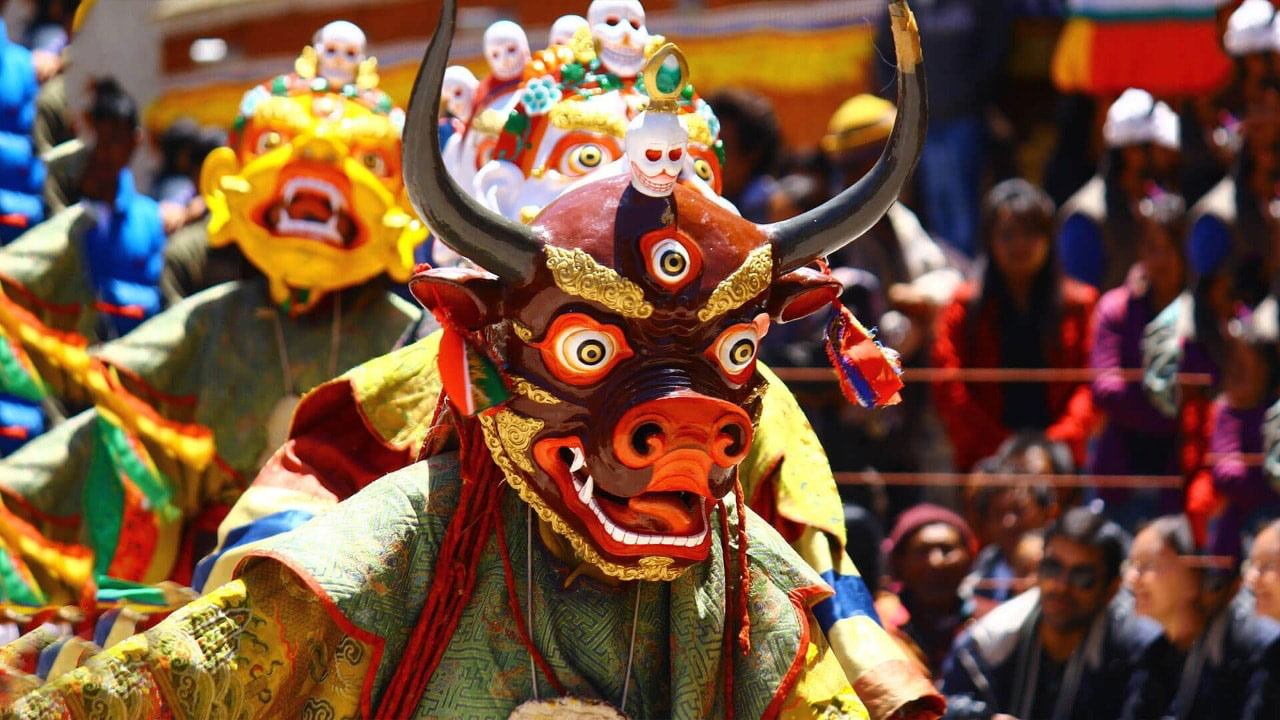
Bhumchu, one of the most notable religious Sikkim festivals of the Buddhist communities, celebrated in the North-Eastern state, sought its genesis in the historical tales. The tales reveal the first observance under king Trisong Deutsonin in 755 – 804 CE, predominantly in Tibet. In the final analysis, the festival witnessed a revival in the 17th century. A sacred vase dating back to the king’s reign assumes unprecedented significance in this festival.
The monks at Tashiding monastery commence the celebration by opening the holy vase of water. Forthwith, the ceremony ends on the second day by refilling the vase with holy river water for the following year . The monks serve the water in the vase as the prediction indicator for the future of the state.
If the water level has lowered, it indicates the state would face famine or drought; raised water status in the vase reveals flood-like conditions; then again, a half-filled vase suggests a prosperous and fortunate future. The lamas distribute a minuscule portion of this holy water among the devotees for a healthy and contented year ahead.
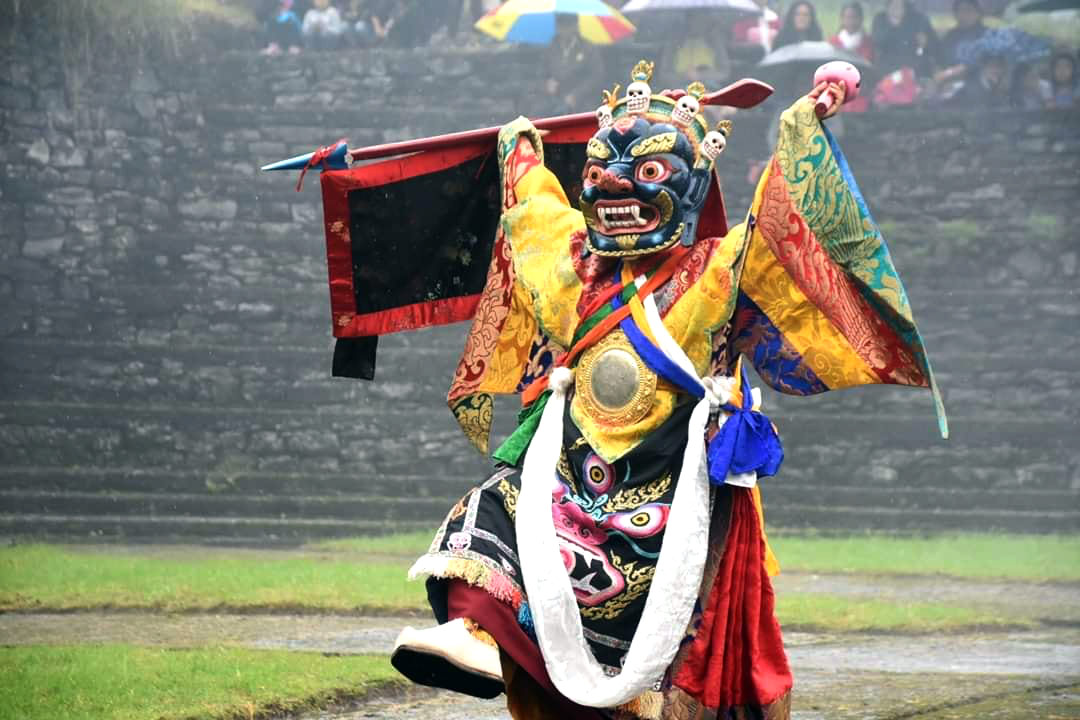
To sum up, besides the list mentioned above, festivals like Pang Lhabsol, Tamu Lochar, Dashain equally hold a special place in Sikkimese culture and tradition. In addition, many festivals closely resonate with the traditional fêtes of other parts of India, for instance, Tihar. At the same time, the rituals are unique to the Sikkim communities.
The people of Sikkim believe in nature worship. It is evident in the festivals like Pang Lhabsol, in which Mount Kanchenjunga is worshipped as the guardian deity of Sikkim. Over the years, the state has also stamped out and accommodated festivals and special events to attract the tourist population. Winter Carnival, International Flower show, Rhododendron festivals are some Sikkim festivals created and promoted in the contemporary period to exhibit the state’s forte and beauty.
Image credits: The copyright for the images used in this article belong to their respective owners. Best known credits are given under the image. For changing the image credit or to get the image removed from Caleidoscope, please contact us.
LEAVE A REPLY Cancel reply
Save my name, email, and website in this browser for the next time I comment.
INSPIRING READS
Old love vs modern love, world radio day: celebrating india’s legacy from akashvani to podcasts, 5 trendsetting mangalsutra designs for the contemporary bride, shankaracharya – the saint who revived hinduism, kite festivals in india: experiencing colorful skies of joy, southern splendour – glimpses of ten iconic temples of south india, trending topics.
- Terms of Use
- Privacy Policy
Affiliate disclosure: As an Amazon Associate, we may earn commissions from qualifying purchases from Amazon. Learn more
© caleidoscope - 2024.

- Tour Packages
- North Sikkim Tour
- +91-8826678880
Exploring the Rich Tapestry of Sikkim’s Culture: A Journey into Diversity
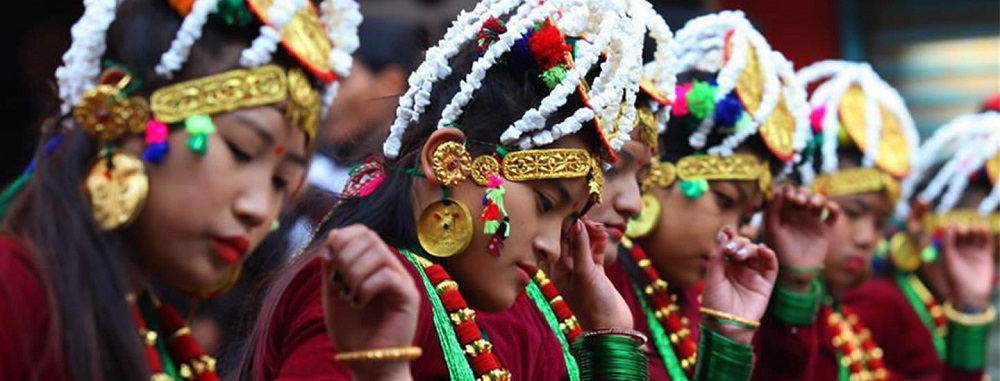
- BY Sidharth
- DATE 11/22/2023
Sikkim, nestled in the northeastern part of India, is a land of mesmerizing landscapes and a vibrant cultural mosaic. This tiny state, bordered by Bhutan, Tibet, and Nepal, boasts a unique blend of traditions, religions, and ethnicities, making it a captivating destination for those seeking an authentic cultural experience.
Ethnic Diversity:
Sikkim is home to various ethnic communities, each contributing to the rich cultural tapestry of the region. The major communities include the Lepchas, Bhutias, and Nepalese. The Lepchas, considered the original inhabitants, have their own distinct language, customs, and rituals. The Bhutias, with their roots in Tibet, bring in Tibetan Buddhist influences, while the Nepalese add a layer of Hindu traditions.
The cultural calendar of Sikkim is adorned with a plethora of festivals, celebrating the diversity of its people. Dashain and Tihar are two prominent Hindu festivals, while Losar marks the Tibetan New Year. The Lepchas celebrate Namsoong, a harvest festival, with traditional dances and rituals. The most famous, however, is the Pang Lhabsol festival, which reflects the state's unique synthesis of Buddhist and Lepcha traditions.
Buddhist Influence:
Buddhism has a deep-rooted presence in Sikkim, and the state is dotted with monasteries that stand as testaments to its spiritual heritage. The Enchey Monastery in Gangtok and the Rumtek Monastery, a seat of the Kagyu sect, are not only religious centers but also architectural marvels. Visitors can witness monks in vibrant robes engaging in prayer ceremonies and rituals, providing a glimpse into the tranquil Buddhist way of life.
Traditional Attire:
The traditional attire of the Sikkimese people reflects their cultural identity. Women often adorn themselves in colorful, intricately woven dresses, while men wear traditional Tibetan-style garments. The elegantly designed jewelry and accessories worn during festivals add to the visual spectacle, creating a vibrant and festive atmosphere.
Sikkimese cuisine is a delightful blend of flavors influenced by Tibetan, Nepali, and Bhutia culinary traditions. Momos, a type of dumpling, are a popular snack, and Thukpa, a noodle soup, is a comforting dish enjoyed by locals and visitors alike. The use of local ingredients such as yak cheese and fermented foods adds a unique twist to the gastronomic experience.
Eclectic Arts and Crafts:
The arts and crafts of Sikkim showcase the exceptional skills of its people. Thangka paintings, intricate handwoven carpets, and wooden masks are some of the traditional crafts that have been passed down through generations. These artistic expressions not only serve as decorative items but also hold religious and cultural significance.
In conclusion, Sikkim's culture is a harmonious blend of diverse influences, creating a captivating and unique identity. Whether immersed in the spiritual ambiance of a monastery, savoring the flavors of local cuisine, or witnessing the vibrant festivals, a journey through Sikkim is an exploration of cultural richness that lingers in the hearts of those who experience it.
- Terms & Condition
- Places to See In Sikkim
- Darjeeling Gtk Pelling Tour
- Gtk Pelling Kalimpong Tour
- Sikkim Delight Tour
- Kolkata Sikkim Tour
- Gtk Pelling Darjeeling
- South Sikkim Tourism
- East Sikkim Tourism
- North Sikkim Tourism
- West Sikkim Tourism
- Sikkim Festivals
- Local Office : DPH Road, Gangtok, Sikkim, IN - 737101
- Working Office Address : 314, Laxmi Deep Building, District Centre, Laxmi Nagar, New Delhi, India - 110092
- [email protected]
- Address : C-62, GL 5, BS CLY Usmanpur New Delhi DL IN - 110053

- Terms and conditions
- sitemap XML
- ©2023 Sikkimtourismindia.com All Rights Reserved.
How It Works
- Tell us details of your holiday plan.
- After you submit the form, one of our travel experts will get back to you with customised holiday package based on your requirement, within 24 hours.
- Grab the deal and start packing your bags for an indelible holiday with Tour My India.
Call Us for details
+91-9212777225
Request a quote.
North India
- Himachal Pradesh
- Uttarakhand
- Uttarpradesh
South India
- Andhra Pradesh
- Maharashtra
Central India
- Madhya Pradesh
- Chhattisgarh
Union Territories
- Andaman and Nicobar Islands
- Jammu Kashmir
- Dadra and Nagar Haveli
- Daman and Diu
Popular India Tourism Destinations by Interest

- Hill Station
- Yoga and Ayurveda
Adventure Tourism
- Motor Biking
- Peak Climbing
- Mountain Biking
- River Rafting
- Horse Safari
- Camel Safari
- Jeep Safari
Pilgrimage Tourism
- Christianity
Packages by State
- Jammu & Kashmir
Holidays by Interest
- Heritage Tours
- Ayurveda Tours
- Special Interest
Popular Tour Packages
- Golden Triangle Tour
- Classical India Tour
- Golden Triangle with Tiger Tour
- Sikkim Darjeeling Tour
- Frozen River Trek
Luxury Train Tour
- Palace on Wheels
- Heritage on Wheels
- Maharaja Express
- Royal Rajasthan on Wheels
- Buddhist Circuit Train
Special Packages
- Indian Wildlife Tour
- Temple Trails Tour India
- Buddhist Circuit Tours
- Himalayan Wonder
Fixed Departure Tour
- Chadar Trek
- Chopta - Chandrashila Trek
- Snow Leopard
- Dzongri Goecha La Trek
- Agra Hotels
- Jaipur Hotels
- Udaipur Hotels
- Manali Hotels
- Ladakh Hotels
Wildlife Resorts
- Ranthambore National Park
- Bandhavgarh National Park
- Corbett National Park
- Kanha National Park
- Pench National Park
- Tadoba National Park
Beach Resorts
- The Park Calangute
- Neelam the Grand
- Hotel Calangute Towers
- Alor Holiday Resort
- Lazy Lagoon Sarovar Portico Suites
Luxury Hotels
- Aman-i-Khas, Ranthambore
- Hyatt, Bangalore
- Hyatt Regency, Delhi
- Leela Palace, Udaipur
- ITC Grand Chola, Chennai
Top Weekend Breaks & Short Getaways Near Your City
- Weekend Getaways Delhi
- Weekend Getaways Mumbai
- Weekend Getaways Chennai
- Weekend Getaways Bangalore
- Weekend Getaways Nagpur
- Weekend Getaways Hyderabad
- Weekend Getaways Cochin
- Weekend Getaways Chandigarh
- Weekend Getaways Ahmedabad
- Weekend Getaways Pune
- Weekend Getaways Jaipur
- Flight Booking
- International NEW
International

States › Sikkim › Culture and Tradition
Culture and Tradition of Sikkim
Sikkim is a unique blend of different religion, customs and traditions of different communities. In the ancient times, Sikkim was occupied by three tribes; Naong, Chang and the Mon. But with the course of time, the inhabitants of the nearby countries became a major inhabitant of the state. That includes the Lepchas; the clan of Nagas from Tibet, are one of the tribal groups, the Bhutias; the descendents of Buddhists from Tibet and the Nepalese; the descendents of the Hindus from Nepal, which now dominates the considerable portion of the Sikkim’s population. And hence, Nepali is the most common among all the languages in Sikkim. The Tibetan Bhutias, secured their deep rooted ties to the tradition and belief since the last three centuries they had been settled in Sikkim. Living together harmoniously, the Sikkimese Bhutias and Tibetans display the cultural, social and linguistic commonness in between.
Sikkim is like a beautiful bouquet that is adorned with the amazing colors and essence of different flowers, in the form of attractive folk dances, customs and traditions of different tribes and castes. Their exuberant religious festivals bring along with them the ceremonial mask dance performed by the monks with superfluous energy and zeal. The swords and sparkling jewellery add to the authenticity of the performance while they dance to the resounding drums and trumpeting of horns. Saga Dawa is one of such auspicious festivals, celebrated by the people who follow Mahayana form of Buddhism.

On which, they go to monasteries and offer butter lamps along with the prayers. Later, the colorful procession adorned by the monks chanting holy scriptures, go around the town of Sikkim. The earliest inhabitant of the state; the Lepchas, were the believers of Bon faith and mune faith based on spirits, before they turned Buddhist or Christians.
The mountains, rivers, forests etc, that are the spirit of Nature, generally considered as God by them. The phang labsol is one of the festivals celebrated by them, when they offer gratitude to the Mount Kanchendzonga which is considered as a powerful guard of the state. Desian festival is celebrated in the month of sept-oct, which symbolizes the victory of good over evil, just like the hindu festival ‘Dussehra’, and Diwali is celebrated on the 10th day after Dasian. Then there is very solemn Kagyat dance performed every 28th or 29th day of the Tibetan calendar. Other than these there are several other festivals celebrated by the people living in Sikkim namely Losoong, Namoong, Labab Duchen, Yuma-Sam-Manghim, Tendong-Iho-Rum-Fat etc.
Monasteries in Sikkim
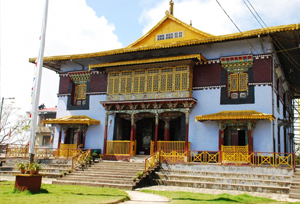
Pemayangtse Monastery

Rumtek Monastery

Enchey Monastery

Phensang Monastery
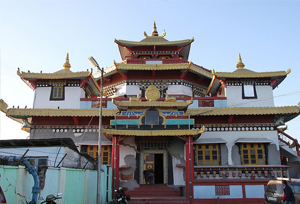
Phodang Monastery
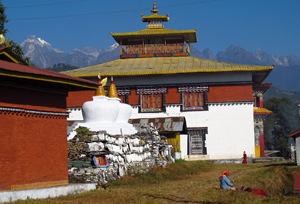
Tashiding Monastery

Lachen Monastery

Dubdi Monastery

Ralang Monastery

Sangachoeling Monastery

Labrang Monastery

Kartok Monastery

Namchi Monastery
Best hotels & resorts for holidaying in sikkim.

Hotels in Gangtok

Hotels in Lachung

Hotels in Aritar

Hotels in Lachen
Popular Tour Packages Sikkim
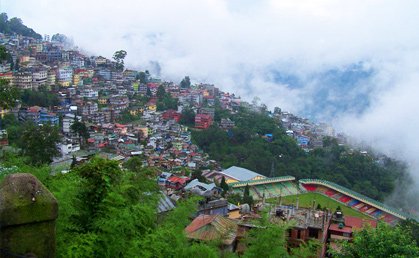
Eastern Mystery Tour

Gangtok with Pelling Tour
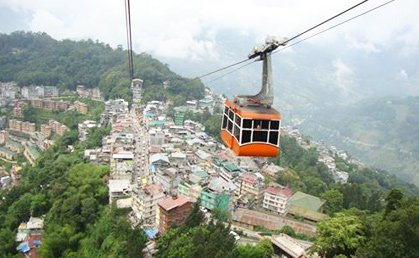
Best of Gangtok
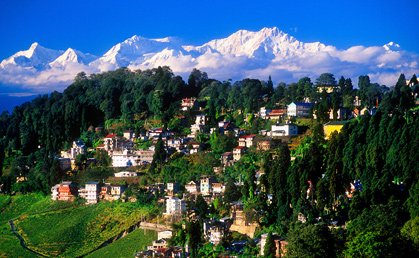
Unique Himalaya
Explore sikkim holiday packages by interest.
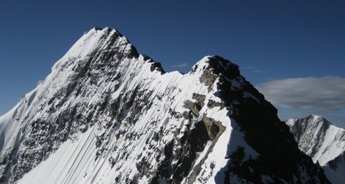
Sikkim Family Tour Packages

Sikkim Honeymoon Tour Packages

Sikkim Pilgrimage Tour Packages

Sikkim Adventure Tour Packages

Sikkim Buddhist Circuit Tour Packages
Top tourist destinations in sikkim.
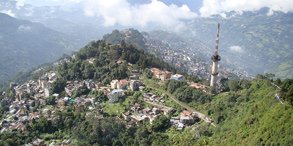
Top Things to Do & See on Your Trip to Sikkim
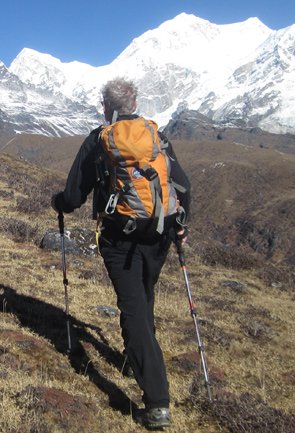
Trekking in Sikkim
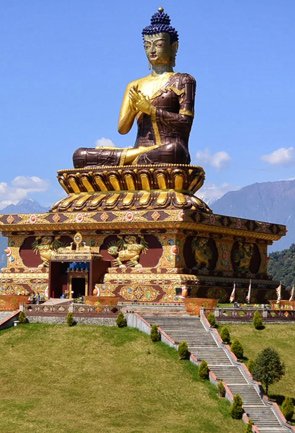
Pilgrimages in Sikkim

Heritages in Sikkim
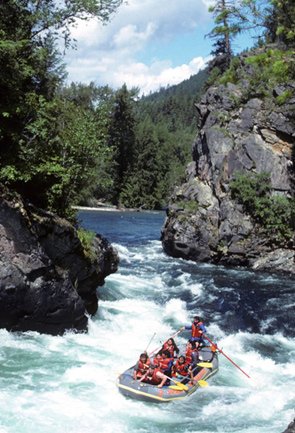
Adventure Tourism in Sikkim

Lakes in Sikkim
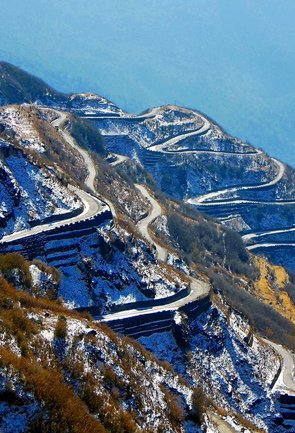
Hill Stations in Sikkim

Wildlife in Sikkim
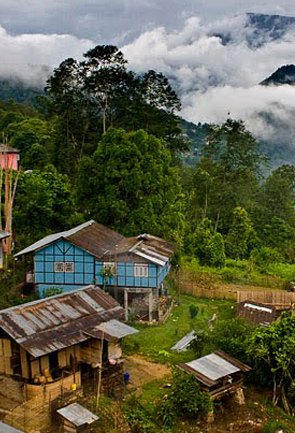
Village Tourism in Sikkim
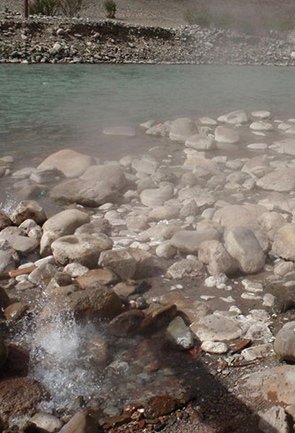
Hot Springs
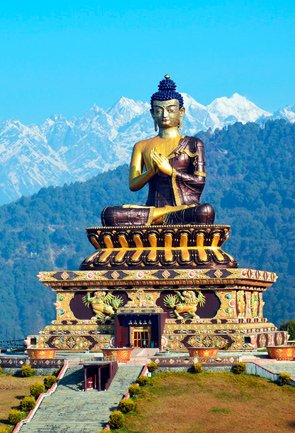
Buddhist Circuits

Fairs & Festivals
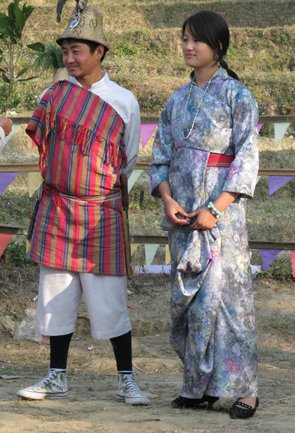
People & Culture
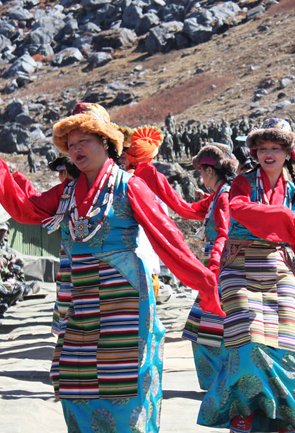
Cuisines of Sikkim

Shopping in Sikkim
Sikkim travel information at a glance.
- About Sikkim
- Top Tourism Destinations
- Popular Tourist Attractions
- Best Things to Do
- Best Time to Visit Sikkim
- Holiday Packages for Sikkim
- Top Accommodation
- How to Reach Sikkim
- Sikkim Travel by Road
- Sikkim Travel by Train
- Sikkim Travel by Air
- Sikkim Tourism Map
- Visiting Sikkim in Winters
- Visiting Sikkim in Summers
- Visiting Sikkim in Monsoon
- Do’s & Don’ts
- Entry Formalities to Sikkim
- Restricted Area Permit
- South Sikkim
- West Sikkim
- East Sikkim
- North Sikkim
- Why TMI for Sikkim


25,000+ students realised their study abroad dream with us. Take the first step today
Here’s your new year gift, one app for all your, study abroad needs, start your journey, track your progress, grow with the community and so much more.

Verification Code
An OTP has been sent to your registered mobile no. Please verify

Thanks for your comment !
Our team will review it before it's shown to our readers.

Essay On Sikkim
- Updated on
- Dec 24, 2021
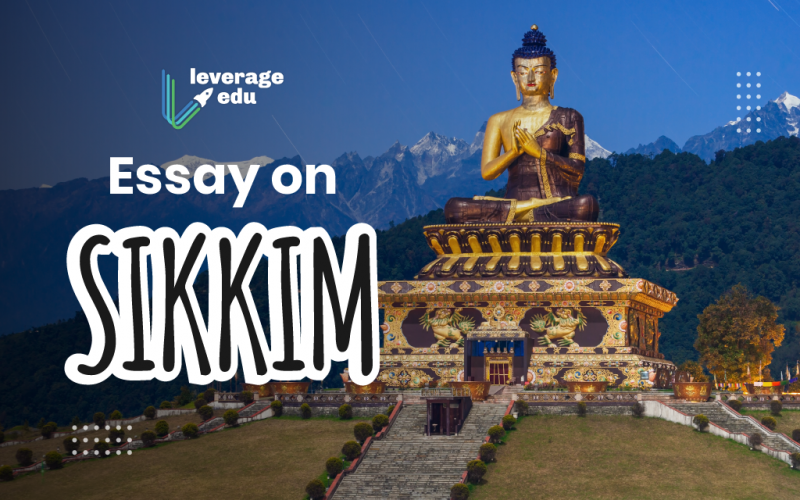
Essay writing is a way to discern the general knowledge, language skills and creativity of the writer. This is why it is included in several Indian competitive exams, international entrance exams, and even in aptitude tests conducted by employers and companies before hiring. Many competitive exams like UPSC Mains, CLAT , SAT , IELTS etc. use the essay section to test the candidates’ thinking prowess and general ability. Essay writing includes a wide range of topics, from current affairs to descriptions and even personal anecdotes. Hence, it is best to practice a few topics before any competitive exam. In this blog, we will cover the tips and format for writing an essay on Sikkim, to help you prepare creative and informative writing pieces!
Also Read: Save Electricity Essay: Format & Samples
This Blog Includes:
Tips and format for essay writing, sample essays on sikkim, sample 1: essay on sikkim.
- Sample 2: Essay On Sikkim
Essay writing can be argumentative, narrative, descriptive, analytical or comparative in nature. If you have to write an essay on Sikkim, you must keep these tips in mind. This form of writing can be easy and creative if you follow certain steps and tips:
- Brainstorm arguments related to the topic and form a specific structure before you start writing.
- Make notes about the topics before you start writing so that your arguments and descriptions are coherent and clear.
- An introduction is the most important aspect of any form of writing, thus, try to keep it short, engaging and precise who that the reader knows the intent.
- Avoid repetition and rambling while writing.
- Proofread! Always read your essay before turning it in to ensure no grammatical errors or spelling mistakes.
The writing format for an essay is straightforward and direct. The purpose of any essay is to inform or present an argument to the reader. It will be the same if you have to write an essay on Sikkim. It has three components: Introduction, Main Body and Conclusion.
To write an informative and creative essay on Sikkim, you need to research, determine your intent for writing and form a proper structure. Once you have your outline for the essay, you can start writing and include interesting facts and anecdotes to make your essay exciting and readable. Here are some samples for writing an essay on Sikkim!
Tucked away in the majestic Himalayas lies the small, quaint hill-city of Sikkim. Blessed with scenic beauty, rich cultural and ethnic diversity, the state has emerged as the best tourist spot for Indians and foreigners. From picturesque tourist attractions like Gangtok, Pelling, Lachung and Namchi to mouthwatering Sikkimese cuisine to snow-capped mountains, Sikkim has it all! Despite being one of the smallest, obscure states in India, Sikkim is widely known for its hospitality, natural beauty, multicultural diversity and ethnic cuisine. This landlocked state of India has a rich and tumultuous history that began in 1642; the kingdom of Sikkim fought many wars with its neighbours to assert its independence. Surrounded by powerful nations, the kIngdom of Sikkim in 1950 signed the Indo-Sikkimese Treaty with India to protect its international interests and preserve the nation’s integrity. After a referendum in 1975, the state decided to join India as a state, becoming the 22nd state. While Sikkim may not have been a part of the struggle for preserving India, the state has since elevated the name of our subcontinent: Sikkim has been at the forefront in several domains, the state has the best educational system, awarded the cleanest state in India and is the only state to transition to organic farming. The state makes tireless efforts in preserving and developing the human resources of the city. Sikkim’s government actively encourages prominent technical colleges like IITs, NITs, and Manipal University to set up institutions to ensure that their students have the best in terms of education and research. Despite having a largely agrarian economy, the state has diversified its economy by encouraging tourism, trade and small -scale industries to set up in the region. Sikkim may be one of the smallest cities of India but its philosophy and ideals are larger than life. The commitment to the preservation of nature as well the cultural history of the nation and city is what makes Sikkim so great and powerful. Indian states have much to learn from this small city who is leaving all the big cities behind in terms of success and human development.

Sample 2 : Essay On Sikkim
In 1975, Sikkim became the 22nd state to join the Indian subcontinent following a people’ referendum. Since then, the state has contributed to upholding the integrity and sovereignty of the Indian state with its commitment to human development, democracy, and economic upliftment. Bordering three different countries, Sikkim’s city is home to beautiful tourist hot stops like Khangchendzonga National Park, Nathula Pass, Tsomgo Lake, and beautiful monasteries and temples. The rocky terrains and cool temperature make the city an ideal spot for travel. The alluring city is one of the most visited and highly sought after tourist destinations in the world so much so that the city has two airports in its vicinity, railway connectivity and national highway to encourage tourism and local development. While Sikkim may not have the largest economy in India, it does have the fastest growing economy with its small- scale industries, organic farming and blooming tourism. The state is dedicated to the environmental cause and is the only Indian state to have the status of ‘Nirmal State’ for campaigning to become free of public defecation. The real beauty of Sikkim lies in its people and their culture. Sikkim is a multicultural, multilingual, multiethnic and multireligious state with 4 different official languages and several regional languages. It is home to a diverse group of people hailing from Nepal, Bhutan, Tibet etc. Its people follow other religions, different cultures and lifestyles yet live together in harmony and peace. This harmonious amalgamation makes Sikkim so special and unique even in a deeply diverse country like India. Sikkim’s natural beauty and ecology are breathtaking; the state is replete with diverse flowers and holds the International Flower Festival every year to celebrate biological diversity. It has over 552 unique types of birds and over 600 different species in butterflies. They have wild animals like snow leopard, red panda, Tibetan wolf etc. Sikkim is a beautiful city to visit and live in. The state has achieved great heights in terms of health, education, sanitation, public welfare and environmental preservation. Sikkim, despite having limited resources and industrial development, continuously works towards the betterment and enhancement of its people.

Explore: Essay on Digital India
Hopefully, this blog guided you on how to write a compelling essay on Sikkim for competitive exams. Essay writing is an integral part of the admission process in several universities and colleges, thus learning and practising how to express your opinions and arguments is extremely important. For more educational content, follow Leverage Edu ! Follow us on LinkedIn , Instagram , Facebook and Quora .
An ardent reader and writer, Gitali loves to create meaningful and well-researched content on studying abroad, scholarships and exploring student life hacks. When she is not busy working, you can find her doodling in the corner or discussing why Seinfeld is the greatest sitcom ever.
Leave a Reply Cancel reply
Save my name, email, and website in this browser for the next time I comment.
Contact no. *

Leaving already?
8 Universities with higher ROI than IITs and IIMs
Grab this one-time opportunity to download this ebook
Connect With Us
25,000+ students realised their study abroad dream with us. take the first step today..

Resend OTP in

Need help with?
Study abroad.
UK, Canada, US & More
IELTS, GRE, GMAT & More
Scholarship, Loans & Forex
Country Preference
New Zealand
Which English test are you planning to take?
Which academic test are you planning to take.
Not Sure yet
When are you planning to take the exam?
Already booked my exam slot
Within 2 Months
Want to learn about the test
Which Degree do you wish to pursue?
When do you want to start studying abroad.
September 2024
January 2025
What is your budget to study abroad?

How would you describe this article ?
Please rate this article
We would like to hear more.

Sikkim Tour Packages
- 3 Nights / 4 Days
- 4 Nights / 5 Days
- 5 Nights / 6 Days
- 6 Nights / 7 Days
- 7 Nights / 8 Days
- 8 Nights / 9 Days
- 9 Nights / 10 Days
- 10 Nights / 11 Days
- Sikkim Honeymoon Packages
—Please choose an option— 3 Nights/4 Days 4 Nights/5 Days 5 Nights/6 Days 6 Nights/7 Days 7 Nights/8 Days 8 Nights/9 Days 9 Nights/10 Days 10 Nights/11 Days
Exploring the Rich Art and Craft of Sikkim
Encircled by the soaring peaks of Khangchendzonga , Sikkim shimmers like a hidden trove nestled in the Himalayas. Though pint-sized in area, this northeast haven safeguards an artistic heritage as richly layered as its mountain contours. From the monastic paintings of Pemayangtse to the vivid textiles threaded with foraged dyes, Sikkim’s traditional arts reflect its communities’ souls.
The Lepcha, considered the first peoples of Sikkim, are master dyers and weavers transforming Himalayan wools and silks into vibrant garments. Their geometric patterns, echoing Sikkim’s wildflowers in subtle geometry, blend old and new in linen and wool. The wavering shadows of Lepcha backstrap looms, steadied by bare feet planted in the earth, produce shawls and wraps carrying the scent of mountain winds.
Read more : Sikkim tourism & Rumtek tourism
Lepcha Weaving
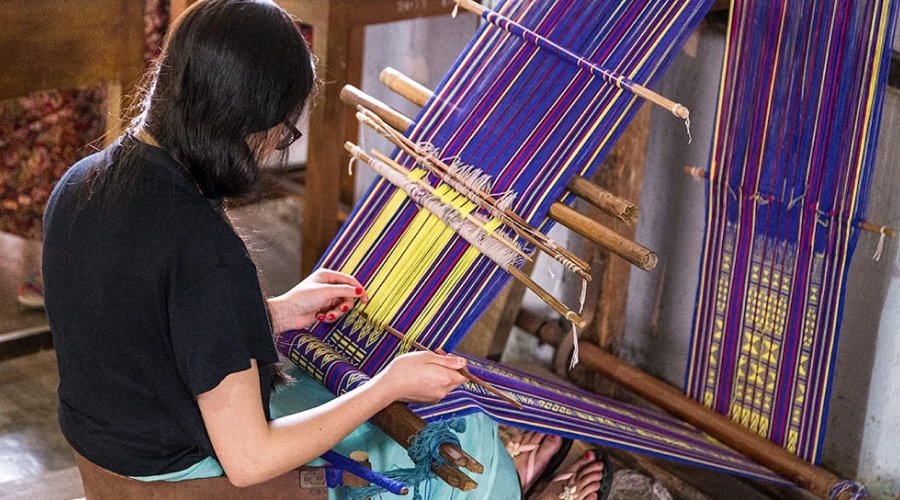
The native Lepcha have a treasured tradition of looms and handwoven textiles, integral to Sikkim’s creative landscape. Lepcha shawls and quilts were traditionally fashioned from sheep’s wool and colored using native herbs, blossoms, and barks.
Prevalent motifs feature geometric shapes, stars, foliage and fauna rendered in minimalist outlines. Today’s Lepcha weaves fuse traditional patterns with contemporary forms and new fabrics like cotton and silk.
Read more : Shopping in sikkim & 10 Best reasons to visit in sikkim
Bhutia Thangka Art
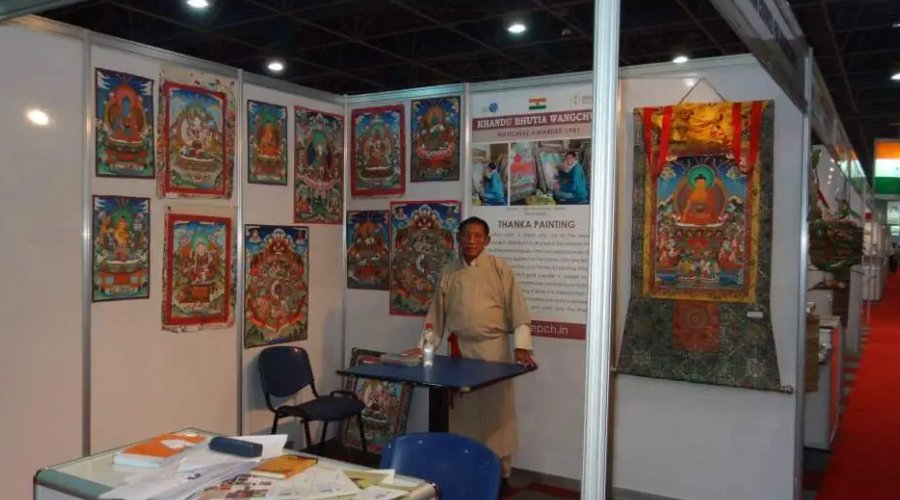
Among the Bhutanese-origin Bhutia community, thangka religious painting is a highly specialized art form requiring immense skill and spiritual devotion. Thangkas depict Buddhist deities and narratives within a strict composition, proportions, and iconography framework.
The art and craft of Sikkim thrive on such rare thangka painters who create intricate pieces with natural dyes on cotton canvas. It can take months to produce one thangka following precise grid measurements and detailed brushwork.
Read more : Art and Craft of sikkim & People and Culture

Nepali Stone Carvings
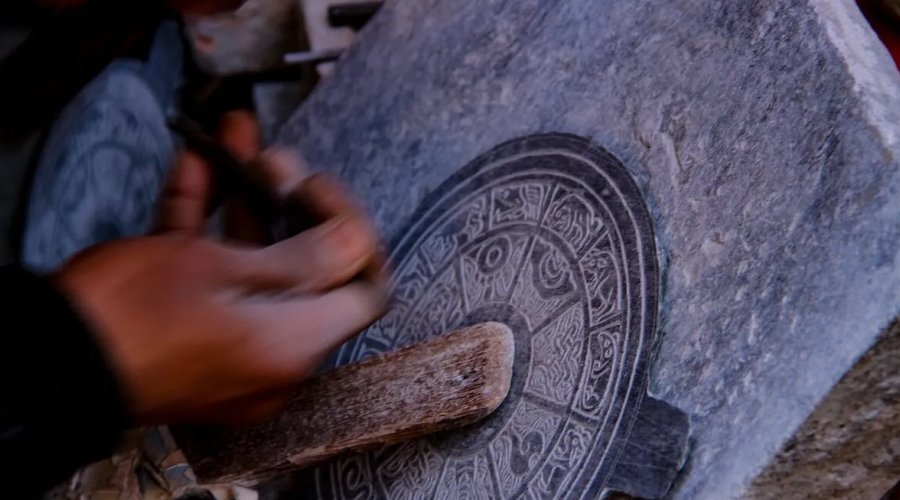
Introduced by masons from Nepal, stone carving rapidly developed as a prized craft in Sikkim using the abundant local supply of slate. Stone carvings are dominated by Hindu religious imagery of deities, temple scenes, and mythological creatures.
Intricately carved and decorated Buddhist stone prayer wheels called mani-lhadens also abound. You can also find more modern carvings of secular motifs like wildlife and ethnic symbols. Stone carving remains a living art form of Sikkim passed down generations.
Cane and Bamboo Crafts
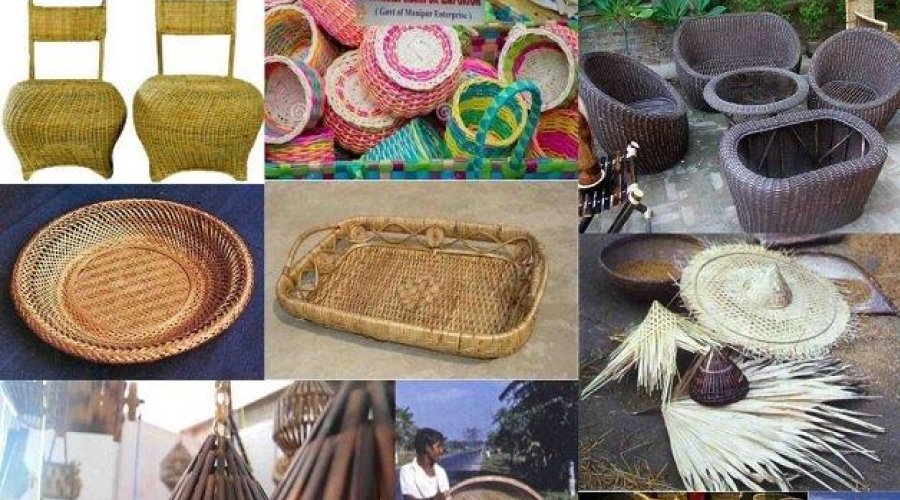
Cane and bamboo crafts also have an essential place in the art and craft heritage of Sikkim, practiced by Lepchas and Bhutias. Bamboo grows abundantly in the state’s forests, allowing for a thriving handicrafts cottage industry. Artisans weave baskets, decorative wall hangings, mats, hats, and furniture from split bamboo and cane strips combined with other natural materials. Cane and bamboo craft workshops in rural Sikkim produce amazing artwork out of seemingly simple grass stems!
Read more : Nathang valley tourism & How to reach namchi
Mask Making
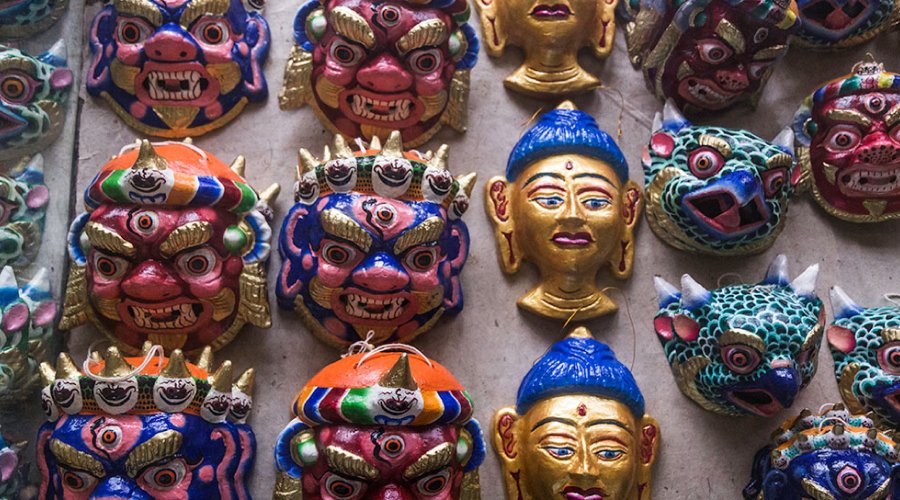
Masks in traditional dances and shamanic rituals showcase Sikkim’s artistry with wood, metals, fibers, clay, and paints. The craft draws from diverse religious influences – Buddhism, spirit worship, totemic clans – to create colorful masks of deities, animals, and mythical figures.
Each mask is unique, customized to the dancer, or for ceremonial purposes. The most elaborate masks with intricate carvings and details can take months to complete by skilled artisans as valuable cultural artifacts of the art and craft of Sikkim.
Paper Mache Crafts

Paper mache crafts introduce intriguing textures, shapes, and decorative elements into Sikkim’s art heritage. Papier mache refers to artwork made from paper pulp built over wire frames. In Sikkim, pieces range from lampshades and vases to figurines and animal forms, often brightly painted and varnished.
Intricate artwork involves layering the paper strips and molding them into lifelike, surprisingly lightweight three-dimensional objects. Workshops in Gangtok provide a glimpse into the paper mache craft-making process that is integral to the art and craft culture of Sikkim.
Read more : 15 Things to do in Gangtok & How to reach Gangtok
Paintings and Murals
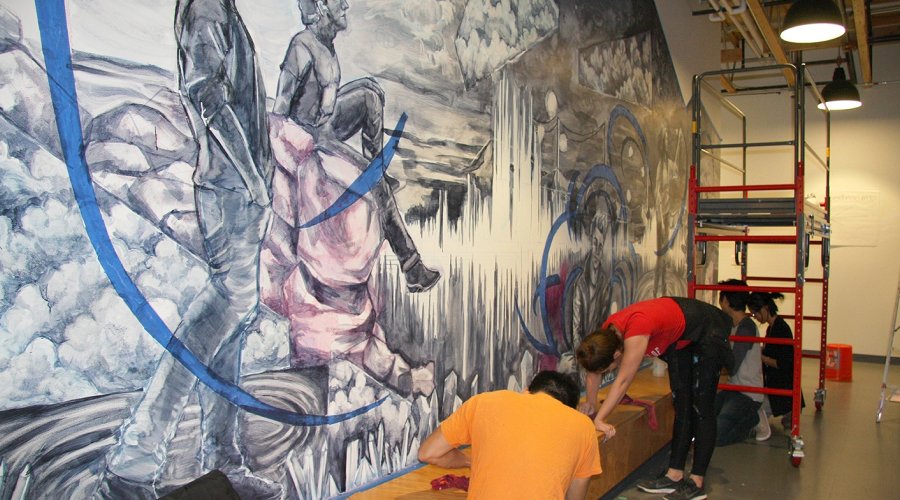
Beyond religious art, secular painting traditions thrive in Sikkim, as expressed through local village and urban artists. Watercolor landscapes capturing the beauty of Sikkimese valleys and peaks are a favorite alongside abstract acrylic interpretations.
You can also find modern urban art murals with graffiti elements and cultural themes bringing fresh perspectives. While stylistically modern, the artisanal foundation values creative freedom grounded in drawing and coloring skills. These contemporary painting practices continue the art and craft lineage of Sikkim.
Read more : Buddhist circuit in sikkim
Preserving a Rich Heritage
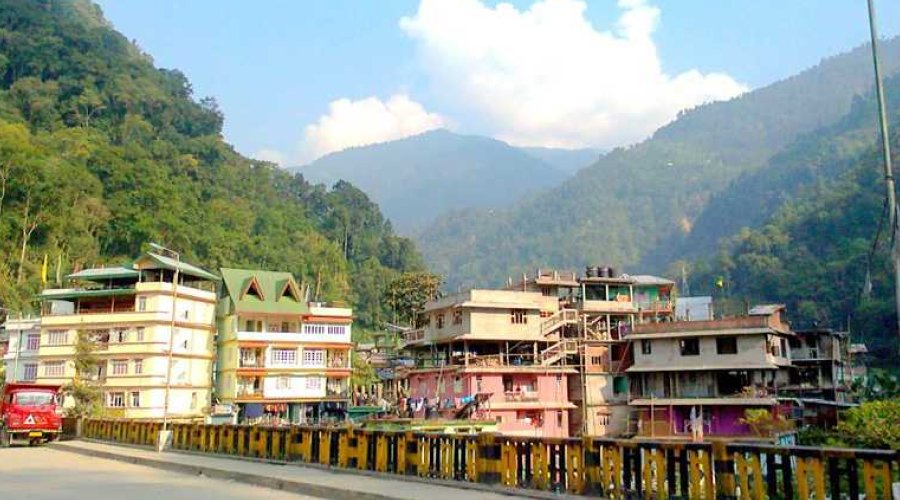
The art and craft of Sikkim thus covers an extensive range showcasing the skills and tools nurtured within its communities. With growing modernization and emigration, many traditional art forms face challenges. However, efforts are ongoing to support master artisans and each new generation through training, materials supply, and new market channels for their products.
Art and craft also constitute an essential home-based income source for rural households. By sustaining its vibrant arts heritage, Sikkim retains this unique aspect of its identity even as it rapidly modernizes.
So, journeys into Sikkim should look beyond mountain views and outdoor adventures to explore galleries, workshops, handicraft stores, and cultural spaces safeguarding its rare art and craft. The collective artwork of communities visually symbolizes Sikkim’s intangible heritage.
Remember to pick up an authentic art or craft piece on your next visit! Beyond souvenirs, observe how organic shapes, colors, and symbols persist in enhancing everyday Sikkimese life through artistic fonts. Behind the spectacular vistas, the craftwork heritage quietly thrives as the living art and craft of Sikkim.
Categories?
Get Instant Support
Trip Duration 3 Nights/4 Days 4 Nights/5 Days 5 Nights/6 Days 6 Nights/7 Days 7Nights/8 Days 8 Nights/9 Days 9 Nights/10 Days 10 Nights11 Days 11 Nights/12 Days
Number of People 1 2 3 4 5 6 7 8 9 +10
Why Choose Sikkim Tourism?
Experienced, happy customers, local offices, get a question.
Do not hesitage to give us a call. We are an expert team and we are happy to talk to you.
+91-9810066496 [email protected]
Top Things to do on your Holiday to Sikkim
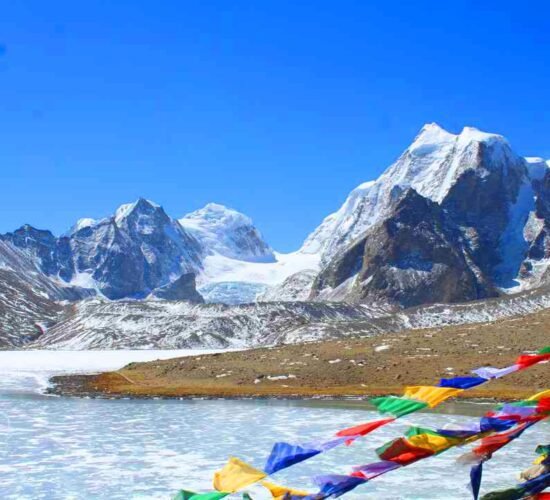
10 Things to do in Lachen

10 Best Things to Do in Pelling

15 Things to Do in Gangtok

33 things to do in Sikkim

Things to do in Bhutan

Things to do in lachung

Things to do in Namchi

Things to do in Ravangla

Things to do in Yuksom
Things to do in darjeeling, popular sikkim tour packages.
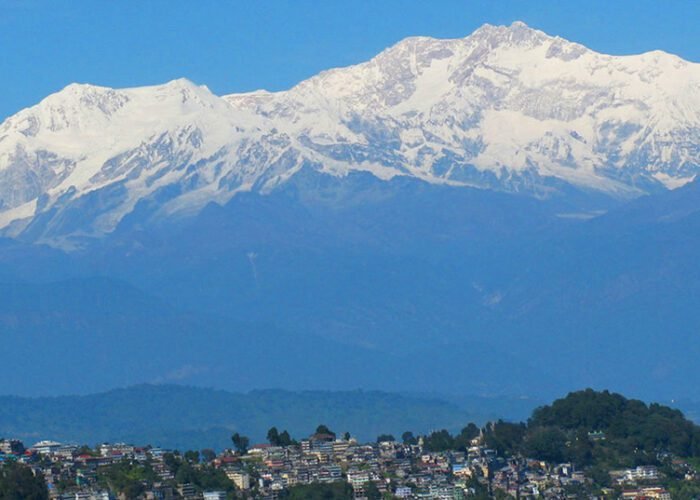
Kalimpong Gangtok Pelling Darjeeling Tour Package
Send Enquiry

Gangtok Zuluk with North Sikkim Tour Package
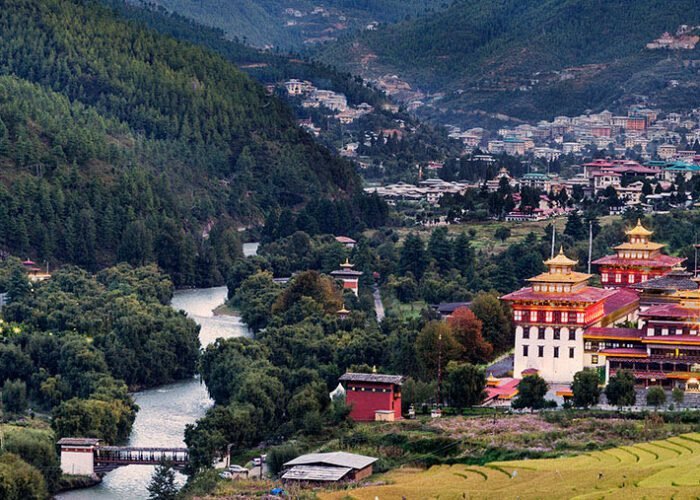
Gangtok with Bhutan Tour Package

Gangtok Lachung Lachen Darjeeling Tour Package
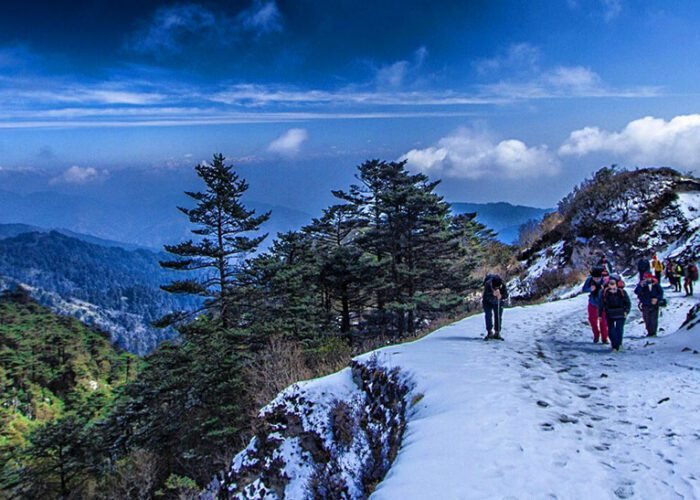
Gangtok Family Tour Package
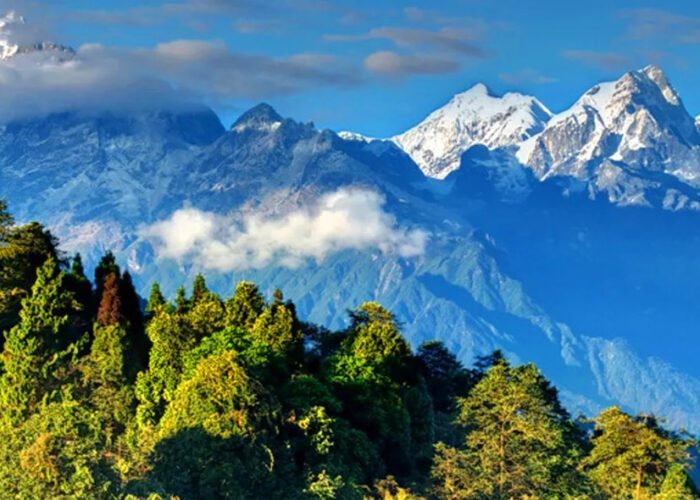
Gangtok Darjeeling Family Tour Package

Gangtok Darjeeling Dooars Tour
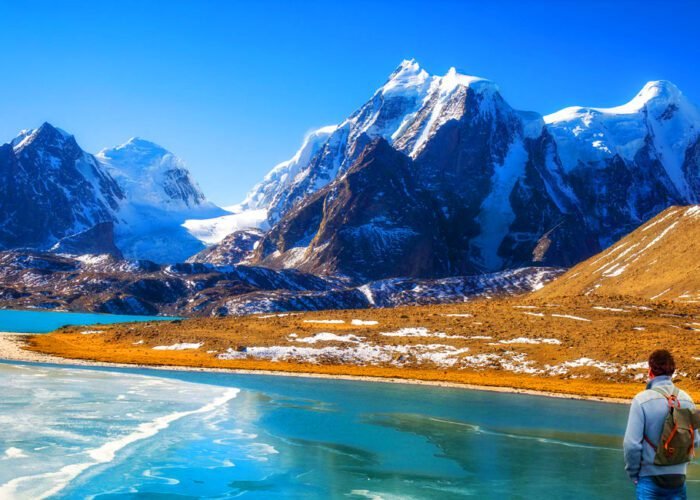
Discover Sikkim Tour Package

Darjeeling Pelling Gangtok Lachung Tour Package
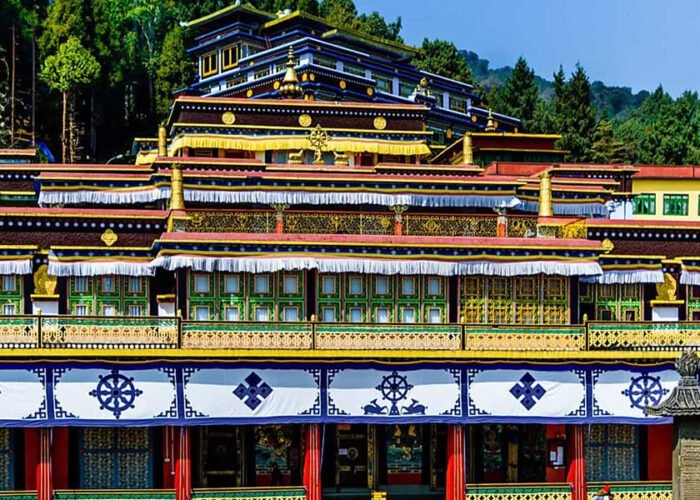
Kalimpong Gangtok Lachung Pelling Darjeeling Tour Package

Kalimpong Darjeeling Gangtok Lachen Lachung Tour Package
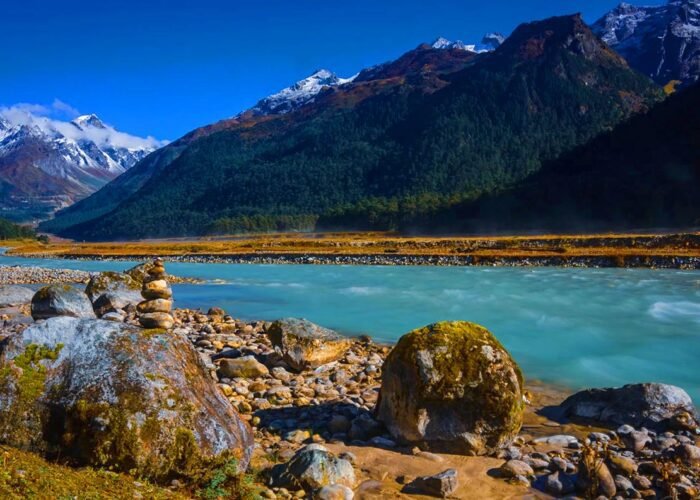
Gangtok Lachung Pelling Tour Package

Gangtok Lachen Lachung Pelling Tour Package
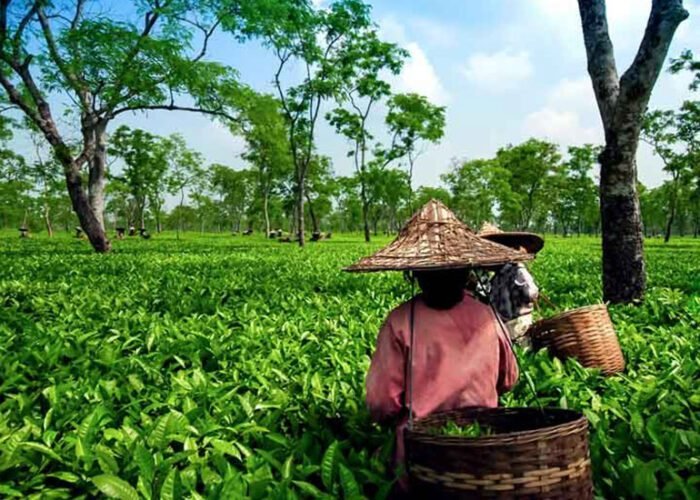
Gems of Northeast India Gangtok Kalimpong Darjeeling Tour Package
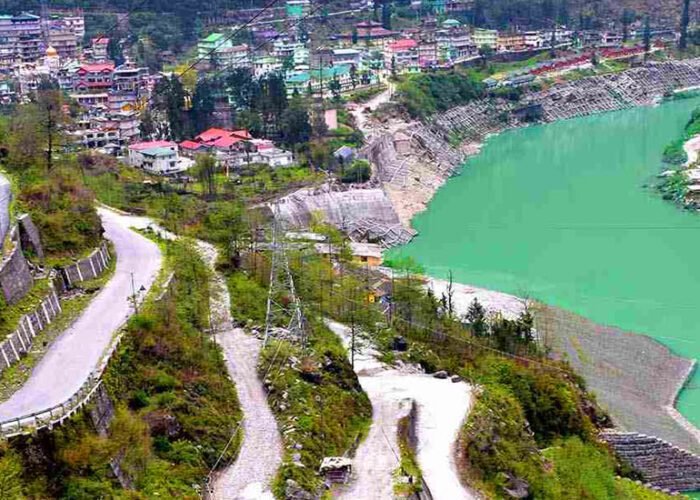
Gangtok Tour Package
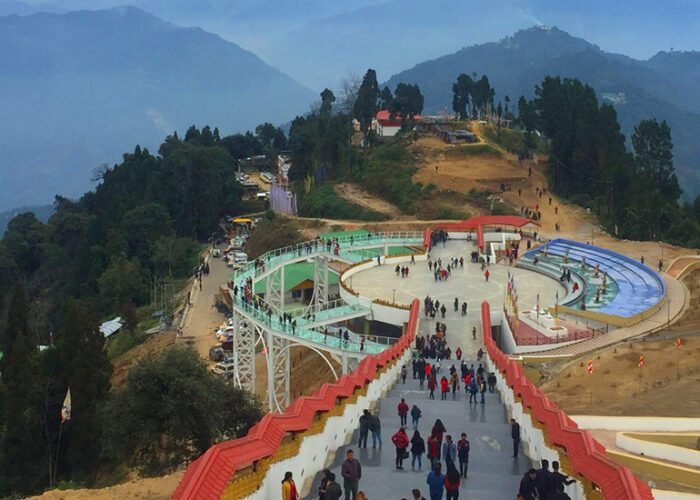
Gangtok Pelling Tour Package
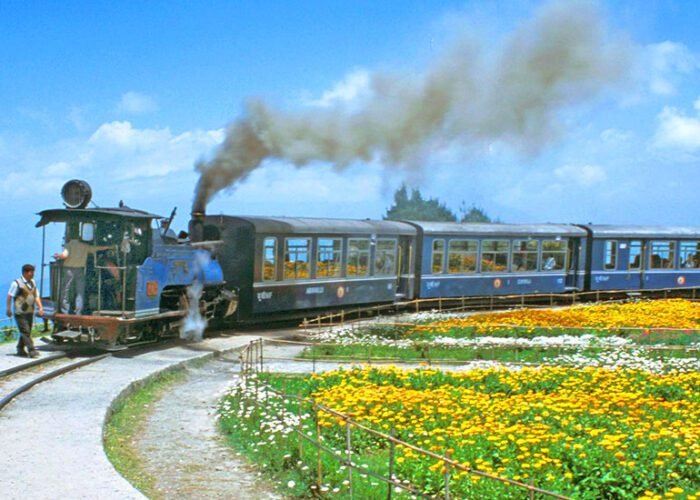
Gangtok Pelling Darjeeling Tour Package
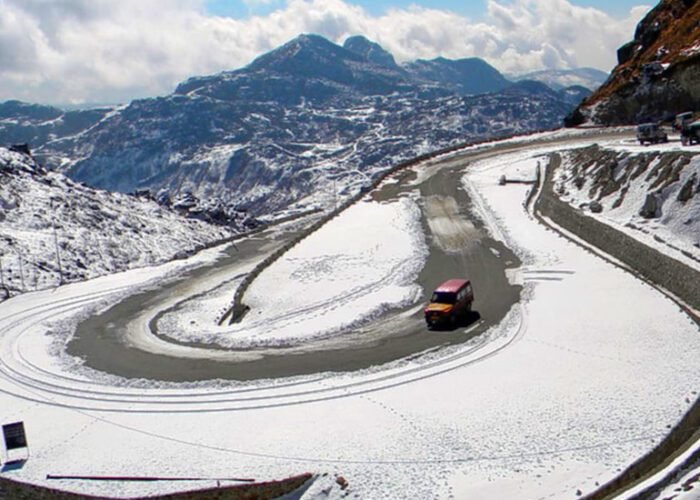
Gangtok North Sikkim Tour Package
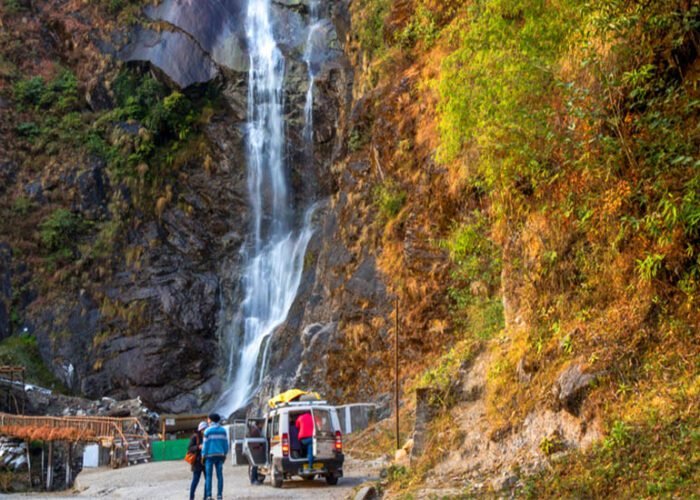
Gangtok Lachung Tour Package

Gangtok Lachung Pelling Darjeeling Tour Package
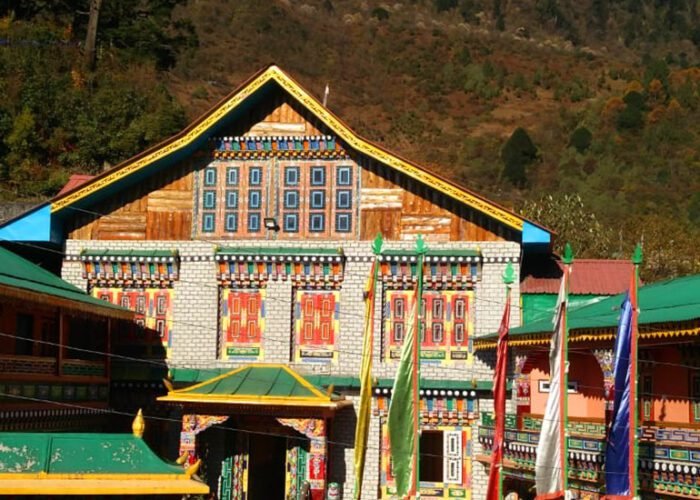
Gangtok Lachen Lachung Tour Package
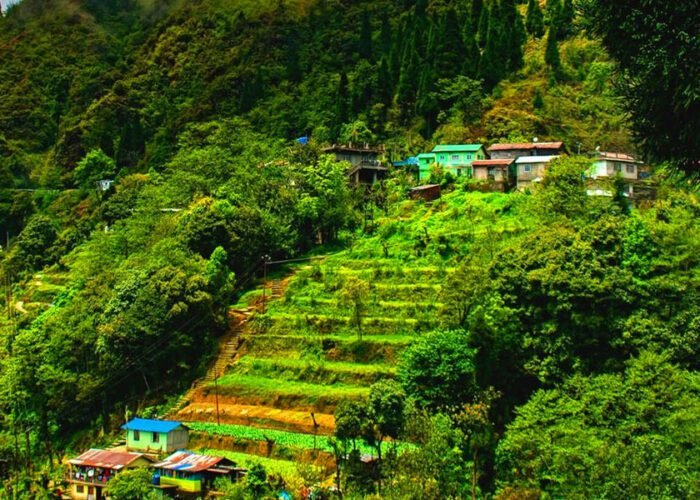
Gangtok Darjeeling Tour Package

Extended Gangtok Pelling Darjeeling Tour Package

Extended Gangtok and Pelling Tour Package
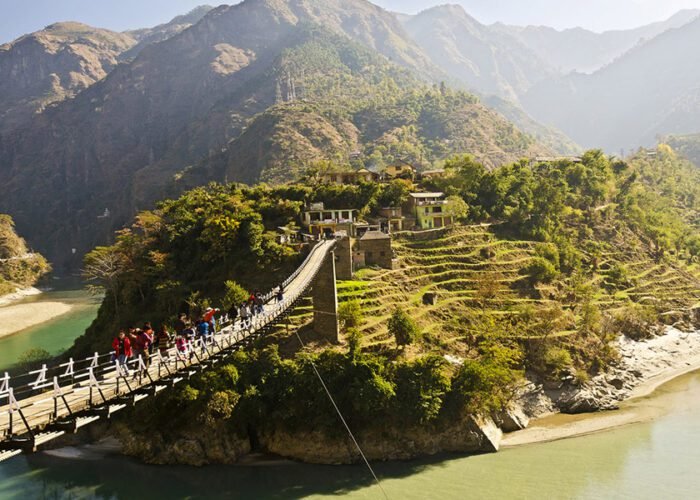
Book Delightful Gangtok and Darjeeling – Sikkim Tour Package

Darjeeling Pelling Gangtok – Sikkim Tour Package
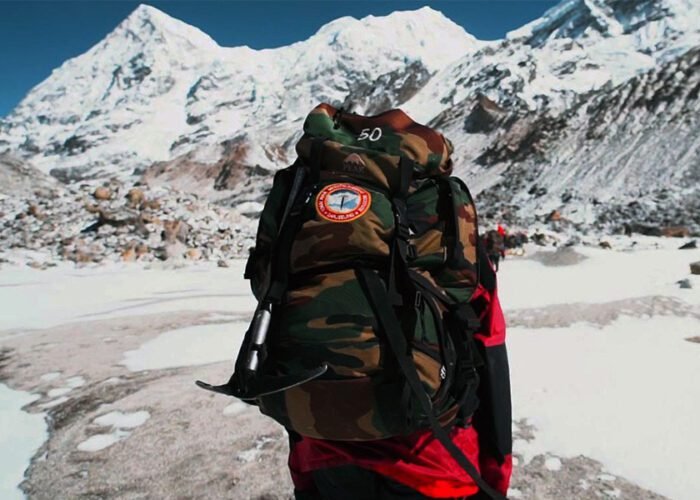
Darjeeling Kalimpong Gangtok- Sikkim Tour Package
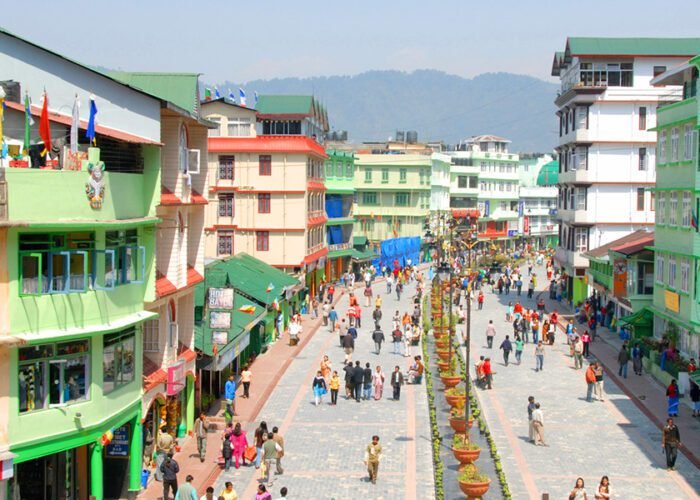
Gangtok, Lachung, Pelling, Darjeeling Tour Package

Darjeeling Gangtok Sikkim Tour Package
Popular places to visit in sikkim.
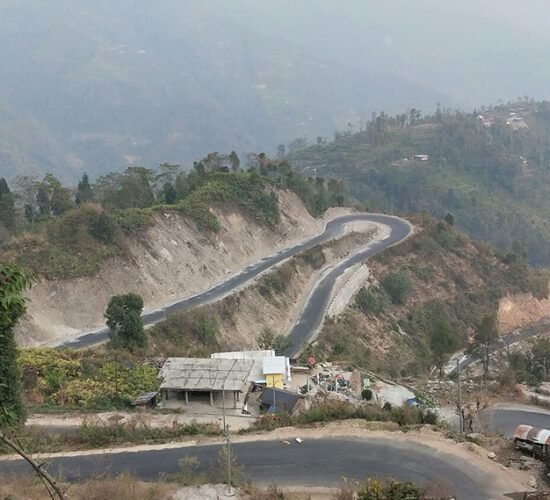
Popular Attractions To Visit in Sikkim
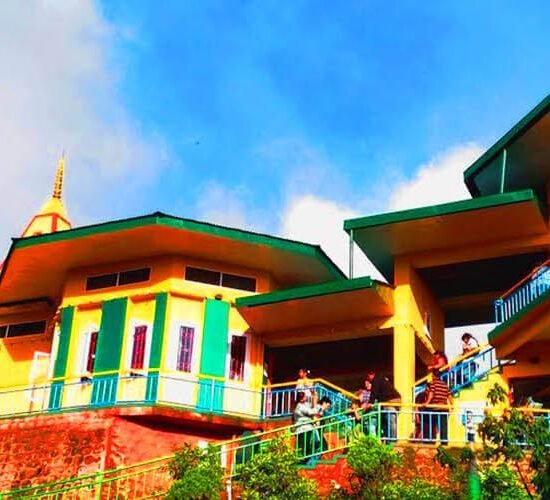
Rabdentse Ruins
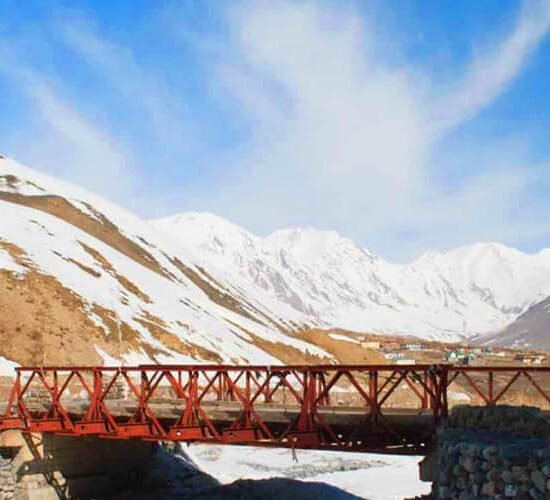
BARSEY RHODODENDRON SANCTUARY

Thakurbari Temple Gangtok
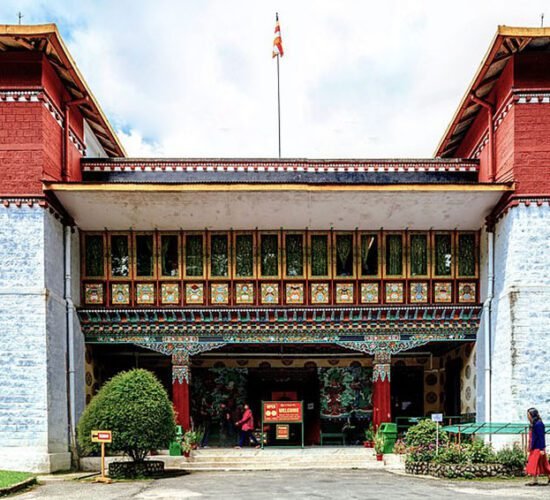
Namgyal Institute of Tibetology

Temi Tea Garden
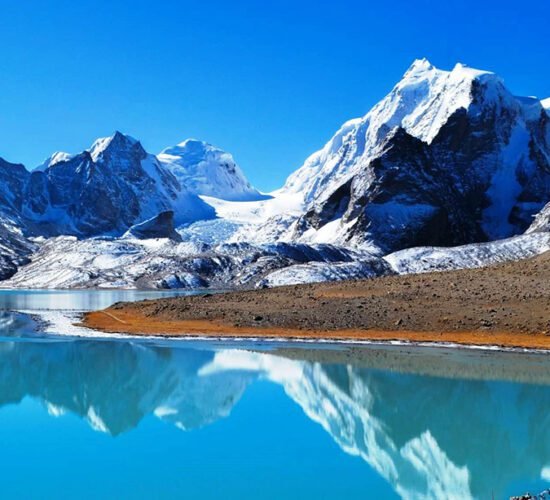
Tsomgo Lake and Baba Mandir Sikkim
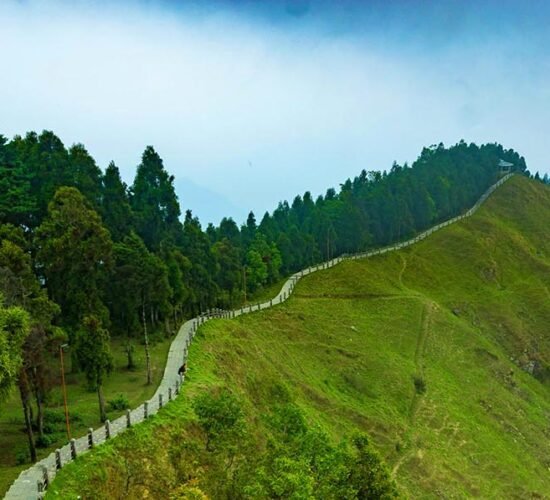
Nathu La Pass

Saramsa Garden
Customer reviews.
At times, there is a huge difference between what they offer and what they provide. However, SikkimTourism.org kept its promise to us. They put forth a lot of effort to make our trip to Sikkim the finest one ever.
SIKKIMTOURISM.ORG assisted me in planning a trip for my family and me. I spoke with other tour guides and looked through numerous websites. But none could compare to Sikkim Tourism’s degree of professionalism.
Mr. ROHIT phoned me in response to my letter inquiry. He is a really helpful dude. I had a lot of concerns for him, such as the weather in Sikkim and if it was OK to bring my 2-year-old, and he patiently responded to all of them.
We were able to organise our journey to Gangtok, Tsomgo Lake, Baba Mandir, Nathu La, Yumthang Valley, Lachung, and Darjeeling as a result of his insightful ideas.
The dates of our journey were February 7–15 of this year. The itinerary provided by Sikkim Tourism, our travel guide, was fantastic and guaranteed that our vacation will be memorable.
We need drivers who had a thorough understanding of the roads because Sikkim is situated in a hilly area and has twisty roads. We received these from SikkimTourism.ORG, which helped us feel secure.
Eight days were spent travelling. From day 1 to day 8, the schedule included all travel arrangements, information on the vehicles, accommodations, and meals. The crew, in particular Mr. Rohit, kept in touch with us well.
The accommodation, meals, and transportation arrangements were all well-taken care of. What I appreciated most were the safe travel itinerary and the on-time cab drivers. Overall, our trip was enjoyable. Thanks, SikkimToursim.org group
Excellent lodging, outstanding transportation, and lovely memories to cherish. Because of their smooth services, I would heartily suggest SIKKIMTOURISM.ORG tourism. I really appreciate it. Bravo to ROHIT and the rest of the SIKKIM TOURISM.ORG team.
In April 2019, my family and I travelled to Sikkim and Darjeeling. We reserved our tour with SIKKIMTOURISM.ORG to make travel easier. I must say that the accommodations for travel, the mode of transportation, and how the trip was planned were all excellent.

Cultural Symbols || Rituals || Social Culture || Personal Culture
SIKKIM - CULTURE


Essay on Sikkim
Students are often asked to write an essay on Sikkim in their schools and colleges. And if you’re also looking for the same, we have created 100-word, 250-word, and 500-word essays on the topic.
Let’s take a look…
100 Words Essay on Sikkim
Introduction.
Sikkim is a beautiful state in India, nestled among the Himalayas. It’s known for its stunning landscapes, rich culture, and biodiversity.
Sikkim is in the northeastern part of India. It is surrounded by three countries: China, Bhutan, and Nepal. Sikkim’s terrain is mostly hilly with a diverse range of flora and fauna.
Sikkim’s culture is a blend of Nepalese, Bhutanese, and Tibetan influences. Festivals like Losar, Saga Dawa, and Dasain are celebrated with great enthusiasm.
Sikkim’s economy primarily depends on agriculture, tourism, and hydroelectric power. Organic farming is particularly promoted.
Tourism is a major part of Sikkim’s economy. Tourists flock to see monasteries, trek in the mountains, and experience the local culture.
Also check:
- Paragraph on Sikkim
250 Words Essay on Sikkim
Geographical overview.
Sikkim, a gem in the Northeastern part of India, is a unique blend of diverse culture, rich heritage, and mesmerizing natural beauty. Nestled in the lap of the Eastern Himalayas, it is the second smallest state in India, spanning approximately 7,096 square kilometers.
Cultural Mosaic
Sikkim is a cultural mosaic, home to various ethnic groups like the Bhutias, Lepchas, and Nepalese, each contributing to a vibrant socio-cultural fabric. The state’s festivals like Losar, Saga Dawa, and Dasain, reflect this cultural richness.
Flora and Fauna
Sikkim’s biodiversity is awe-inspiring. It hosts the Khangchendzonga National Park, a UNESCO World Heritage Site, and is home to several endemic species. The state is also renowned for its rhododendron groves and over 600 species of orchids.
Economic Aspects
The economy of Sikkim is primarily agrarian, with cardamom, ginger, and oranges being significant produce. Tourism, owing to its natural beauty and cultural heritage, also plays a crucial role in Sikkim’s economy.
Educational Scenario
Education in Sikkim has seen substantial growth, with literacy rates soaring to 82.2% as per the 2011 census. The Sikkim Manipal University, a prominent institution, contributes significantly to the state’s educational landscape.
Sikkim’s Future
Sikkim’s future appears promising, with its focus on sustainable development and organic farming. It became the first Indian state to be declared “organic” in 2016, setting a precedent for other states.
In conclusion, Sikkim, with its captivating landscapes, diverse culture, and progressive outlook, is a jewel of India that continues to enchant and inspire.
500 Words Essay on Sikkim
Introduction to sikkim.
Sikkim, the least populous and second smallest state of India, is a land of unique beauty and tranquility. Nestled in the lap of the mighty Himalayas, it is a haven of biodiversity and a melting pot of diverse cultures, traditions, and religions.
Geographical Splendor
Sikkim is a geographically diverse state, with altitudes ranging from as low as 280 meters to as high as 8,586 meters above sea level. The state is divided into four districts—North, South, East, and West—each offering its own distinct landscapes and attractions. The state is home to the majestic Kanchenjunga, the third highest peak in the world, which is not just a geographical feature but also an integral part of the local culture and folklore.
Biodiversity and Environment
Sikkim is a treasure trove of biodiversity. It houses around 5,000 species of flowering plants, 515 rare orchids, 60 primula species, and 36 rhododendron species. The state’s commitment to the environment is evident from its title as the first ‘Organic State’ of India, achieved in 2016. This implies that all farming in the state is carried out without the use of synthetic fertilizers and pesticides, providing a model of sustainable farming for the world to follow.
Culture and Tradition
Sikkim is a confluence of diverse cultures and traditions. The state’s population comprises three major communities—Bhutia, Lepcha, and Nepalese—each with their unique customs, languages, and festivals. Sikkim is also known for its vibrant monastic culture, with Buddhism playing a significant role in shaping the social and cultural landscape. The state is adorned with numerous ancient monasteries, with Rumtek Monastery being one of the most prominent.
Economy and Development
The economy of Sikkim is primarily based on agriculture and tourism. Organic farming has given a new direction to the agrarian economy, enhancing livelihood opportunities and promoting sustainable development. Tourism, on the other hand, is a major source of income and employment. Sikkim’s picturesque landscapes, serene monasteries, and diverse flora and fauna make it a paradise for tourists.
The state has made significant strides in education and healthcare, with a literacy rate of 82.2% and a robust healthcare infrastructure. The Sikkim Manipal University, a prominent institution, is a testament to the state’s commitment to higher education and research.
Sikkim, with its enchanting beauty and rich cultural heritage, is a jewel in India’s crown. Its commitment to environmental conservation and organic farming sets an example for the rest of the world. Despite its small size and challenging terrain, the state has made remarkable progress in various sectors, demonstrating that sustainable development is achievable with the right blend of policies and public participation. Sikkim is more than just a state; it’s a model of harmony, sustainability, and progress.
That’s it! I hope the essay helped you.
If you’re looking for more, here are essays on other interesting topics:
- Essay on Shimla
- Essay on Shifting Cultivation
- Essay on Sheep
Apart from these, you can look at all the essays by clicking here .
Happy studying!
Leave a Reply Cancel reply
Your email address will not be published. Required fields are marked *
Save my name, email, and website in this browser for the next time I comment.

Skip to main content
- Select your language English हिंदी

Festivals and Observances of India

Flagship Events

Timeless Trends

Digital District Repository

North-East Archive
Ajanta Caves

Textiles and Fabrics of India

Forts of India

Historic Cities of India

Intangible Cultural Heritage

Musical Instruments of India

Research Papers

Photo Essays

Food & Culture

Manuscripts

Museum Collections

Photo Archives

Gazettes and Gazetteers

Union Catalogue

Indian National Bibliography

Reports & Proceedings

Other Collections

Social Share
Folk dances of sikkim.
Domain: Performing arts
State: Sikkim
Description:
Sikkim has a unique and distinctive folklore. The Lepcha community is said to be the natives of Sikkim followed by the Bhutias who are the descendants of early settlers of Bhutan and Tibet. There also exists the Nepalese community within the state. Therefore, these people together have folk dances for almost every occasion in Sikkim.
The Yak is an animal commonly found in the Northern parts of Sikkim. Hence, it is one of the most popular subjects of the Sikkim folk repertoire. This dance reflects nature where two people disguise themselves in a yak costume. Another famous dance form is Chu-Faat. It is the folk dance of the Lepcha community where they worship the snowy ranges of mount Kanchenjunga. It is performed to please the Mountain God on the fifteenth day of the seventh month according to the Buddhist lunar calendar every year. This ritualistic dance is performed using bamboo leaves and butter lamps.
During the sowing and harvesting season, Lepcha people perform a special dance called Zo-mal-lok. It is said that this dance lessens their burden of physical hardship and allows them to enjoy their work. Another very famous dance form of Sikkim is Chabrung which is traditionally performed during the house warming ceremonies to get rid of evil spirits. In fact, the song is more about the sound resonated by an instrument called Ki-mukhla. Maruni Dance is performed by the Nepalese community of Sikkim in the month of Karthik. Some of the other folk dances of Sikkim are Sangini, Tamangselo, Gaine, Shabdo and Singhni Cham.

Indian Institute of Technology Bombay

- Phone . [email protected]
- Email . +54 356 945234
Indian Culture App

The Indian Culture Portal is a part of the National Virtual Library of India project, funded by the Ministry of Culture, Government of India. The portal has been created and developed by the Indian Institute of Technology, Bombay. Data has been provided by organisations of the Ministry of Culture.
Email Id : [email protected]
- Paragraph Writing
- Paragraph On Sikkim
Paragraph on Sikkim - Check Samples for 100, 150, 200, 250 Words
The Indian state Sikkim is popularly known for its serene beauty and clean environment. It is situated in the northeastern part of India. Sikkim is the smallest state in India and is the second least populated state in India. Sikkim is known for the existence of various religions, cultures, languages, etc. This article has some sample paragraphs on Sikkim that you can refer to. Check them out.
Table of Contents
Paragraph on sikkim in 100 words, paragraph on sikkim in 150 words, paragraph on sikkim in 200 words, paragraph on sikkim in 250 words.
- Frequently Asked Questions on Sikkim
The Indian state of Sikkim is located in the northeastern part of India, which is in the eastern Himalayas. Sikkim is the second least populated state of our country and is also the smallest state in India. Sikkim is the first attraction of many tourists from all over the world due to the serene beauty of nature and the clean environment. It may be the smallest state, but its people are definitely rich in cultural heritage and philosophical depth. Various cultures, religions, and languages are followed in Sikkim and are therefore much appreciated. Sikkim is like a lovely bouquet embellished with vibrant colours and the essence of many flowers in the form of enticing folk dances, rituals, and traditions from all tribes and castes.
Sikkim is the smallest state of India which lies in the northeastern part of India. Sikkim is the second least populist state in India and is widely known for the serene beauty of nature. Sikkim has become the first attraction of tourists because of its clean environment and beautiful nature. Sikkim is situated in the northeastern part of the Himalayas. It is also appreciated due to the existence of people from different religions, castes, etc. Sikkim was previously occupied by three tribes: the Naong, Chang, and Mon. However, over time, residents from neighbouring nations became a significant part of the state’s population. The Lepchas, a tribe of Tibetan Nagas, are one of the tribal groups, as are the Bhutias, descendants of Buddhists from Tibet, and the Nepalese, descendants of Hindus from Nepal, who now make up a significant section of Sikkim’s population. Mountains, rivers, forests, and other elements of Nature are commonly regarded as God by them.
Sikkim is the second least populated state of India and is also the smallest state of India. Even though it is the smallest state, the philosophies, and ideologies are various. Sikkim is loved by almost all tourists because of the beautiful, clean environment and the existence of multicultural practices. The people of Sikkim practice various cultures, religions, etc. Many different languages are spoken in Sikkim, but majorly Nepalese is spoken. Since their arrival in Sikkim three centuries ago, the Tibetan Bhutias have maintained strong links to tradition and belief. The Sikkimese Bhutias and Tibetans coexist together, demonstrating their cultural, social, and linguistic similarities. Sikkim is like a magnificent bouquet, embellished with the vibrant colours and essence of many flowers in the form of alluring folk dances, rituals, and traditions from all tribes and castes. Their flamboyant religious festivities bring along with them the ceremonial mask dance performed by the monks with extra energy and fervour. While dancing to the thunderous drumming and trumpeting of horns, they wear swords and brilliant jewellery, adding to the authenticity of the show. Saga Dawa is one of these auspicious holidays, which is observed by followers of the Mahayana school of Buddhism.
Sikkim is India’s smallest state, located in the northeastern part of the country. Sikkim is India’s second-least populous state, and it is well-known for its tranquil natural beauty. Because of its clean environment and gorgeous scenery, Sikkim has become a top tourist destination. The Himalayan state of Sikkim is located in the northeastern portion of the Himalayas. It is also valued because it attracts individuals of many religions, castes, and ethnicities. The Naong, Chang, and Mon tribes were the previous inhabitants of Sikkim. Residents from neighbouring countries, on the other hand, gradually became a considerable portion of the population of the state. The Lepchas, a Tibetan Naga tribe, are among the tribal groups, as are the Bhutias, descendants of Tibetan Buddhists, and the Nepalese, descendants of Hindus from Nepal, who now make up a large portion of Sikkim’s population. Mountains, rivers, forests, and other natural components are frequently referred to as God. Sikkim is like a beautiful bouquet, with brilliant colours and the essence of various flowers in the form of seductive folk dances, rituals, and customs from all tribes and castes. Their spectacular religious celebrations are accompanied by the monks’ energetic and fervent ceremonial mask dance. They wear swords and glittering jewellery as they dance to the thunderous drumming and trumpeting of horns, adding to the show’s authenticity. One of the auspicious holidays recognised by Mahayana Buddhists is Saga Dawa. Sikkim may be one of India’s smallest states, yet its philosophy and values are vast. What makes Sikkim so magnificent and powerful is its devotion to the preservation of both nature and the nation’s cultural histories. In terms of prosperity and human development, Indian states may learn a lot from this little state that is outperforming all of the big ones.
Frequently Asked Questions on Paragraph on Sikkim
How do we write a paragraph on sikkim.
You can write about the geographical, cultural, and historical background of Sikkim. You can also mention what the place is especially known for.
How is Sikkim special?
Sikkim, which is part of the Eastern Himalaya, is known for its biodiversity, which includes alpine and subtropical climates, as well as being home to Kanchenjunga, India’s highest mountain and the world’s third-highest peak. Gangtok is the capital and the largest city in Sikkim.
Leave a Comment Cancel reply
Your Mobile number and Email id will not be published. Required fields are marked *
Request OTP on Voice Call
Post My Comment
- Share Share
Register with BYJU'S & Download Free PDFs
Register with byju's & watch live videos.
Art Integrated Project- Culture of Sikkim and Delhi
How would you write the Similarities in the Art and Culture of Sikkim and Delhi in an essay of about 300 words? For this, you must know the culture of Delhi and Sikkim beforehand. Let’s do a comparison between Delhi and Sikkim in today’s article. This content can be used to write for your Delhi Sikkim project or Delhi and Sikkim comparison.
What is Art Integrated Project
Art integration is an approach to teaching serious or otherwise boring topics with a strategy where different art forms like music, dance, drama, theatre etc are used as teaching tools. In this new style of teaching the basic knowledge of the art form is not imparted to students. Rather art forms are used as devices to make learning easy and exciting.
What is Art Integration Project in Hindi

Similarities Between Delhi and Sikkim Culture- ‘Ek Bharat, Shreshtha Bharat’ programme
India is a land of unity in diversity. India is a unique nation in terms of its diverse linguistic, religious, cultural, and social threads which are tightly held together in national identity. We are forgetting this brotherhood due to our diverted focus. It is a feeling that has to be nourished and cherished.
To fulfil this need Ek Bharat Shreshtha Bharat programme has been launched by the central government as a cultural exchange programme between different states and/or union territories. National Capital Delhi has been paired with Sikkim under Ek Bharat, Shreshtha Bharat programme.
The states carry out activities to promote a sustained and structured cultural connection in the areas of language learning, culture, traditions & music, tourism & cuisine, sports and sharing of best practices, etc.
Selected students and teachers of both states visit each other under the programme. Cultural exchanges occur from time to time in Sikkim and Delhi with food and dance festivals. With people-to-people contact, the Ek Bharat, Shreshtha Bharat initiative has strengthened the bond of oneness between Delhi and Sikkim. That’s why we are studying similarities between Delhi and Sikkim in art and culture.
Let’s try to establish some more similarities between Sikkim and Delhi
Delhi and Sikkim Project Full information Ppt Download
Geographical Distribution of Sikkim and Delhi
Sikkim is the second smallest state in India. It lies in the Eastern Himalayas between the latitudes of 27*5’N to 20*9’N and Longitudes of 87*59’E to 88*56’E. It is positioned in the North-East of India. Sikkim shares its borders with Nepal in the West, Bhutan in the East, China in the North and West Bengal in the South.
Delhi is bordered by the state of Haryana on three sides ad by Uttar Pradesh on the East.
Delhi Sikkim Project Full information Ppt Download
Art and Culture of Delhi
- Delhi is the traditional and present-day capital of India.
- Delhi is bounded by four states namely Haryana , Rajasthan , Uttar Pradesh and Punjab that have a strong influence on the lifestyle of Delhi.
- People from all parts of the country live here.
- All major festivals of India are celebrated here- Holi, Diwali, Id, Guru Purab, Buddha Purnima or Christmas.
- Delhi is an educational hub for students all over the world.
- Chhole bhature, pav bhaji, aloo puri, purani dilli ke paranthe (stuffed bread of old Delhi) and gol gappe (spicy water balls) are some of the popular street food of Delhi.
Art and Culture of Sikkim
- The people of Sikkim are known as Lepchas, Bhutias and Nepalese.
- They follow Buddhism and Christianity.
- They worship spirits of mountains, rivers and forests.
- The Nepali language is spoken and understood all over the state. This language is similar to Hindi and uses the Devanagari script.
- The traditional male Nepali dress consists of a long double breast garment flowing below the waist and a trouser known as “Daura Suruwal”.
- The female dress consists of a double-breasted garment with strings to tie on both sides at four places, which is shorter than the Daura and is known as “Chow Bandi Choli”.
- Sikkim tea, chhurpi soup, bamboo shoot curry, thukpa, momos, kodo ki roti and kinema curry are some of the famous dishes of Sikkim.
Dialogue Writing about Sikkim’s Nutritional Recipe Thukpa
Kinema Curry

Kinema is a popular dish of Sikkim and Darjeeling. This dish is made up of soya beans that are boiled and fermented to attain a sticky texture. Kinema can be had with bhat (rice) as a side dish. It is a substitute for meat for vegetarians as it is high in antioxidants and low in fat.
Ek Bharat Shreshtha Bharat State Integration List
- Jammu & Kashmir
- Tamil Nadu & Andhra Pradesh
- Himachal Pradesh & Kerala
- Uttarakhand & Karnataka
- Haryana & Telangana
- Rajasthan & West Bengal
- Gujarat & Chhattisgarh
- Maharashtra & Odisha
- Goa & Jharkhand
- Delhi & Sikkim & Assam
- Madhya Pradesh & Manipur & Nagaland
- Uttar Pradesh & Arunachal Pradesh & Meghalaya
- Bihar & Tripura & Mizoram
- Chandigarh & Dadra & Nagar Haveli
- Puducherry & Daman & Diu
- Lakshadweep & Andaman & Nicobar
Conclusion: Cultural Exchange between Delhi and Sikkim
Technology has brought people closer. In this era, it is important to establish cultural exchanges between people of different regions. Mutual understanding and trust are the foundations of India’s strength and all citizens should feel culturally integrated into all corners of India. Students from the northeast, for example, should not feel like ‘strangers in a strange land’ when they arrive in Delhi, or a person from Uttarakhand should not feel like an outsider in Kerala.
We hope that ‘ similarities between Sikkim and Delhi essay’ helped you in your ‘Delhi and Sikkim’ school project. In the comment section, you can leave your questions on Sikkim ad Delhi Art Integration.
CBSE Question Bank 2021 Answer Key Essay on E-Waste in Hindi ऑनलाइन शिक्षा पर मेरे विचार पर निबंध Speech on Nature and Lockdown Speech for CR My First Online Class Experience
Share With Your Friends
- Click to share on WhatsApp (Opens in new window)
- Click to share on Telegram (Opens in new window)
- Click to share on Facebook (Opens in new window)
- Click to share on LinkedIn (Opens in new window)
- Click to print (Opens in new window)
- Click to share on Pinterest (Opens in new window)
- Click to share on Twitter (Opens in new window)
I think you should have added a conclusion would have looked better and add some more comparision
Thanks for leaving the feedback. We will try to improve.
Majority of sikkim follow Hinduism and you did not mention it.
Thanks for informing. We will make the necessary changes to the article.
it was awesome loved it this helped me alotttt
Thanks! It feels great that we could provide useful content.
this was not helpful. really not at all helpful
If you let us know what are you searching for, we will try to help you by providing the required stuff. Thanks for reading.
I like it so much and it help me in my school project 👍
Thanks for your positive feedback. keep visiting essayshout
conclusion on the fusion of delhi and sikkim’s historical monuments, cuisine,flora and fauna,dance,language,wildlife,geographical features etc
Leave a Comment Cancel reply
Sikkimese Thangkas: Religious Art
Explore the world of sikkimese thangkas where buddisht deities reside, dastkari haat samiti.
Thangka Painting of Sikkim: Religious Art (Early 20th century) Dastkari Haat Samiti
The culmination of Tibetan Buddhist art, thangkas are pictorial religious scrolls. Most often hand painted with mineral colours and gold dust, traditional thangkas were also embroidered or appliqued. Seen in monasteries and also homes, they are not merely decorative in function but are highly revered objects with religious significance. The art form originated in Nepal in the 7th century, developing into several schools of painting.
Thangka Painting of Sikkim (Early 20th century) Dastkari Haat Samiti
Historically, thangkas were used as teaching aids. A lama or teacher would travel giving talks on Buddha’s life and teachings. He would carry with him painted scrolls to convey spiritually significant events, aspects of different deities, or Buddhist concepts. Made strictly according to the scriptures, thangkas are considered a visual representation of a spiritual reality.
Thangka Painting of Sikkim: Shakyamuni Buddha (1910) by Rinzing Lharipa Dastkari Haat Samiti
Thangka of Buddha Shakyamuni with his two principal disciples . A thangka is often a visual representation of a particular deity. The central figure in the composition, the deity is shown strictly according to the guidelines of religious texts. The secondary figures or surrounding areas also have symbolic relevance.
The painting is mounted in brocade usually of red (the colour of the lamas), yellow (for the Buddha), and blue (symbolizing eternity).
Born Prince Siddhartha Gautama of Lumbini, Nepal, the Buddha Shakyamuni renounced his princely life. After rigorous ascetic practice, he gained insight into the nature of existence. At this moment he invoked the earth as witness, as indicated by the gesture of his right hand. Buddhist art celebrates this supreme moment.
Thangka Painting of Sikkim: Thangka of White Tara (1992) by Lharipa Nima Tshering Dastkari Haat Samiti
Thangka of White Tara, known as Dolma in Tibetan . Tara is one of the most popular female deities in Tibetan Buddhism and is worshipped in a majority of the Buddhist world. This thangka was painted by Lharipa Nima Tshering Bhutia of Sikkim, for which he received the National Award in 1994.
Considered the embodiment of compassion, Tara bestows blessings of health, happiness and longevity. Here she is shown with a third eye in the middle of her forehead, as also eyes in the soles of her feet and palms of her hand. These are symbols of her wisdom and her ability to see all beings in the realms of existence.
Thangka Painting of Sikkim (2018-03) Dastkari Haat Samiti
A thangka of Green Tara . Of the many different representations of Tara, White and Green Tara are the most worshipped. A symbol of universal compassion, the Green Tara is worshipped for her ability to overcome difficult situations, giving protection against dangers and obstacles.
Like White Tara, her right hand is extended in a gesture of generosity. Her extended right leg signifies her readiness for swift action. She is the dynamic manifestation of Tara, the embodiment of enlightened action.
The colours used in this thangka are mineral colours. The gold in the ornaments and detailing is made from real gold dust.
Thangka paintings are also worshipped as part of religious festivals. Commissioning a thangka is considered a means of generating spiritual merit. In times of particular hardship, an individual can consult a lama to recommend the creation of a thangka to a particular deity. In Sikkim - a significant centre of Buddhism in north eastern India - birth and especially death, are occasions when a special thangka is commissioned.
Thangka Painting of Sikkim: Thangka of the Buddha's first sermon (Early 20th century) Dastkari Haat Samiti
Thangka of Buddha’s first sermon . Thangkas such as this one, are also made to convey important events from the life of the Buddha or the masters. The prince Siddhartha had been travelling with five ascetic companions. Together they had sought the truth through extreme deprivation.
When Gautama realized that enlightenment would come from mental cultivation rather than depriving the body, his companions scorned him and left him. Upon attaining enlightenment, the Buddha sought out his former companions to share his realization. They went on to become his first disciples.
A thangka is a product of painstaking work and detailing. A thangka like this one from the early 20th century would have taken the artist a few months in order to paint details as fine as the motifs on the fabrics worn, or individual strands of hair.
Thangkas perform various functions. Most importantly, they are used to enhance meditative practice. They act as a visual aid to focus concentration and forge a link between the practitioner and the depicted deity.
Thangka Painting of Sikkim: Wisdom Mandala Thangka (1910) by Rinzing Lharipa Dastkari Haat Samiti
Thangka of Buddha Vajradhara and Wisdom Mandala A mandala is a device for Tantric meditation. A visual aid for concentration, it is also a graphic representation of the process.
The blue Buddha and the Mandala are both symbolic of the nature of the mind. This thangka was painted in 1919 by Rinzing Lharipa using gemstone powder and gold dust.
Thangka Painting of Sikkim: Wheel of Life Thangka (Late 20th century) Dastkari Haat Samiti
Thangka of The Wheel of Life An example of a thangka illustrating a Buddhist concept, this thangka is often considered the essence of Buddhist teaching. Holding or turning the wheel is Yama, the god of death with his crown of skulls.
At the centre of the Mandala are the connected images of a pig, a rooster, and a snake. Symbolizing ignorance, greed, and aggression, these are at the centre of the worlds of suffering and dissatisfaction. The cycle of birth and death is split into six segments or realms. At the top right of the thangka, the Buddha points to show a way out of this unending cycle.
Every Buddhist home has its own family shrine, where thangkas are an essential component. The style of painting is in the Tibetan tradition, and the themes are similar. Additionally, there are some thangkas that reflect the syncretic character of local Buddhist practice, depicting deities and events that are particular to Sikkim.
Thangka Painting of Sikkim: "Sikkim Thangka" (2018-03) by Reproduction of original by Ringzen Laripa Dastkari Haat Samiti
Sikkim Thangka Depicting the creation of the kingdom of Sikkim, the original of this thangka is said to have been commissioned by the last Chogyal or priest-king of Sikkim. The thangka uses Buddhist imagery common to religious thangkas, to tell of the founding of Sikkim, which was prophesied by Guru Padmasambhava or Guru Rimpoche, the patron saint of Sikkim.
The four central figures are the three venerated lamas, along with the first Chogyal (second from Right). In 1642, the founder of the Nyingmapa sect in Sikkim along with two other learned lamas, consecrated Phuntsog Namgyal as the first Chogyal. The monarchy continued till 1975.
The thangka is replete with Tibetan and Sikkimese symbolism. The fiery red-countenanced deity riding the mythical snow lion and holding aloft the banner of victory is Kanchendzonga, the protector deity of Sikkim. Below him is Mahakala, the black deity atop the black horse, considered in Tibetan Buddhism as the protector of monasteries. The white figure in the centre is the deity of the Nagas, held sacred in local belief systems of Sikkim.
The thangka captures the syncretic spirit of Buddhism as it is practiced in Sikkim.
Read more about the tradition of Thangka Paintings here : - Buddhist Crafts and Culture: Snapshots from Gangtok - Buddhist Art in Sikkim
Text : Aloka Hiremath Photography : Subinoy Das Artisans : Lharipa Nima Tshering, associates and students at Directorate of Handicrafts and Handloom, Nim Rinchen, Sangye Ground Facilitation : Sonam Gyaltsen, Aloka Hiremath Curation : Ruchira Verma
The Many Faces of Purulia Masks
Women add a special touch to the jutti, puanchei products, recycling elephant dung to paper in rajasthan, the specialist weavers of assam, jamdani sarees, fashioning goa’s windows, a gallery of gond artists, makers of the famed patiala jutti, mobilizing the ramie grass community in meghalaya.
Jump to navigation
Proposals Sought for an Edited Collection of "Conservative" Writing
Call for Chapter Proposals for an Edited Collection
No Lost Causes: An Anthology of Conservative Writing on Art, Society, and Culture
Since the middle of the twentieth century, cultural criticism in the West has been dominated by post-structuralist assumptions about truth, meaning, universal values, etc. Long before then, however, it was understood that art had a higher purpose, that artists sought to inculcate certain values in their audience, whether moral, ethical, or religious. Theorists from Aristotle to Matthew Arnold took it for granted that works of art, in short, do not exist merely for their own sake, but to teach us something about the human experience. Through the work of Paul Elmore More, Irving Babbitt, T. S. Eliot, and the Southern Agrarians, among others, the lingering influence of this view endured into the twentieth century.
I invite proposals for an edited collection of essays that seek to continue these efforts in the twenty-first. Our goal is to articulate and defend conservative approaches to art, society, and culture, like those favored by the individuals named above. Essays are welcome on a wide range of topics, including conservatism in or and any of the following:
Ancient Greece or Rome
Medieval or early modern art
- The Romantic or Victorian eras
Critical evaluations of post-structuralism and its off-shoots (e.g., Marxism, gender theory)
Specific authors or literary theorists
Christianity
- Popular culture
I am also interested in analyses of individual books, movies, and other forms of art that reflect a conservate sensibility. Regardless of topic, the focus of your essay should be aesthetic, rather than political.
Queries and proposals are welcome from recent graduates, independent scholars, and established academics alike. If interested, please send an abstract of 100 - 200 words and a CV to [email protected] by 15 July 2024. I expect to make a decision on submitted proposals by the end of summer. Initial drafts of 5000 - 8000 words, in Turabian / Chicago, would be due by 31 January 2025.
About the editor: Camilo Peralta, PhD, is an Associate Professor of English at Joliet Junior College who has published widely on religion, fantasy, and science fiction. His first scholarly monograph, The Wizard of Mecosta: Russell Kirk, Gothic Fiction, and the Moral Imagination , is available now from Vernon Press: https://vernonpress.com/book/1933
- Share full article
Advertisement
Supported by
Guest Essay
A.I.-Generated Garbage Is Polluting Our Culture

By Erik Hoel
Mr. Hoel is a neuroscientist and novelist and the author of The Intrinsic Perspective newsletter.
Increasingly, mounds of synthetic A.I.-generated outputs drift across our feeds and our searches. The stakes go far beyond what’s on our screens. The entire culture is becoming affected by A.I.’s runoff, an insidious creep into our most important institutions.
Consider science. Right after the blockbuster release of GPT-4, the latest artificial intelligence model from OpenAI and one of the most advanced in existence, the language of scientific research began to mutate. Especially within the field of A.I. itself.

Adjectives associated with A.I.-generated text have increased in peer reviews of scientific papers about A.I.
Frequency of adjectives per one million words
Commendable

A study published this month examined scientists’ peer reviews — researchers’ official pronouncements on others’ work that form the bedrock of scientific progress — across a number of high-profile and prestigious scientific conferences studying A.I. At one such conference, those peer reviews used the word “meticulous” more than 34 times as often as reviews did the previous year. Use of “commendable” was around 10 times as frequent, and “intricate,” 11 times. Other major conferences showed similar patterns.
Such phrasings are, of course, some of the favorite buzzwords of modern large language models like ChatGPT. In other words, significant numbers of researchers at A.I. conferences were caught handing their peer review of others’ work over to A.I. — or, at minimum, writing them with lots of A.I. assistance. And the closer to the deadline the submitted reviews were received, the more A.I. usage was found in them.
If this makes you uncomfortable — especially given A.I.’s current unreliability — or if you think that maybe it shouldn’t be A.I.s reviewing science but the scientists themselves, those feelings highlight the paradox at the core of this technology: It’s unclear what the ethical line is between scam and regular usage. Some A.I.-generated scams are easy to identify, like the medical journal paper featuring a cartoon rat sporting enormous genitalia. Many others are more insidious, like the mislabeled and hallucinated regulatory pathway described in that same paper — a paper that was peer reviewed as well (perhaps, one might speculate, by another A.I.?).
What about when A.I. is used in one of its intended ways — to assist with writing? Recently, there was an uproar when it became obvious that simple searches of scientific databases returned phrases like “As an A.I. language model” in places where authors relying on A.I. had forgotten to cover their tracks. If the same authors had simply deleted those accidental watermarks, would their use of A.I. to write their papers have been fine?
What’s going on in science is a microcosm of a much bigger problem. Post on social media? Any viral post on X now almost certainly includes A.I.-generated replies, from summaries of the original post to reactions written in ChatGPT’s bland Wikipedia-voice, all to farm for follows. Instagram is filling up with A.I.-generated models, Spotify with A.I.-generated songs. Publish a book? Soon after, on Amazon there will often appear A.I.-generated “workbooks” for sale that supposedly accompany your book (which are incorrect in their content; I know because this happened to me). Top Google search results are now often A.I.-generated images or articles. Major media outlets like Sports Illustrated have been creating A.I.-generated articles attributed to equally fake author profiles. Marketers who sell search engine optimization methods openly brag about using A.I. to create thousands of spammed articles to steal traffic from competitors.
Then there is the growing use of generative A.I. to scale the creation of cheap synthetic videos for children on YouTube. Some example outputs are Lovecraftian horrors, like music videos about parrots in which the birds have eyes within eyes, beaks within beaks, morphing unfathomably while singing in an artificial voice, “The parrot in the tree says hello, hello!” The narratives make no sense, characters appear and disappear randomly, and basic facts like the names of shapes are wrong. After I identified a number of such suspicious channels on my newsletter, The Intrinsic Perspective, Wired found evidence of generative A.I. use in the production pipelines of some accounts with hundreds of thousands or even millions of subscribers.
As a neuroscientist, this worries me. Isn’t it possible that human culture contains within it cognitive micronutrients — things like cohesive sentences, narrations and character continuity — that developing brains need? Einstein supposedly said : “If you want your children to be intelligent, read them fairy tales. If you want them to be very intelligent, read them more fairy tales.” But what happens when a toddler is consuming mostly A.I.-generated dream-slop? We find ourselves in the midst of a vast developmental experiment.
There’s so much synthetic garbage on the internet now that A.I. companies and researchers are themselves worried, not about the health of the culture, but about what’s going to happen with their models. As A.I. capabilities ramped up in 2022, I wrote on the risk of culture’s becoming so inundated with A.I. creations that when future A.I.s are trained, the previous A.I. output will leak into the training set, leading to a future of copies of copies of copies, as content became ever more stereotyped and predictable. In 2023 researchers introduced a technical term for how this risk affected A.I. training: model collapse . In a way, we and these companies are in the same boat, paddling through the same sludge streaming into our cultural ocean.
With that unpleasant analogy in mind, it’s worth looking to what is arguably the clearest historical analogy for our current situation: the environmental movement and climate change. For just as companies and individuals were driven to pollute by the inexorable economics of it, so, too, is A.I.’s cultural pollution driven by a rational decision to fill the internet’s voracious appetite for content as cheaply as possible. While environmental problems are nowhere near solved, there has been undeniable progress that has kept our cities mostly free of smog and our lakes mostly free of sewage. How?
Before any specific policy solution was the acknowledgment that environmental pollution was a problem in need of outside legislation. Influential to this view was a perspective developed in 1968 by Garrett Hardin, a biologist and ecologist. Dr. Hardin emphasized that the problem of pollution was driven by people acting in their own interest, and that therefore “we are locked into a system of ‘fouling our own nest,’ so long as we behave only as independent, rational, free-enterprisers.” He summed up the problem as a “tragedy of the commons.” This framing was instrumental for the environmental movement, which would come to rely on government regulation to do what companies alone could or would not.
Once again we find ourselves enacting a tragedy of the commons: short-term economic self-interest encourages using cheap A.I. content to maximize clicks and views, which in turn pollutes our culture and even weakens our grasp on reality. And so far, major A.I. companies are refusing to pursue advanced ways to identify A.I.’s handiwork — which they could do by adding subtle statistical patterns hidden in word use or in the pixels of images.
A common justification for inaction is that human editors can always fiddle around with whatever patterns are used if they know enough. Yet many of the issues we’re experiencing are not caused by motivated and technically skilled malicious actors; they’re caused mostly by regular users’ not adhering to a line of ethical use so fine as to be nigh nonexistent. Most would be uninterested in advanced countermeasures to statistical patterns enforced into outputs that should, ideally, mark them as A.I.-generated.
That’s why the independent researchers were able to detect A.I. outputs in the peer review system with surprisingly high accuracy: They actually tried. Similarly, right now teachers across the nation have created home-brewed output-side detection methods , like adding hidden requests for patterns of word use to essay prompts that appear only when copied and pasted.
In particular, A.I. companies appear opposed to any patterns baked into their output that can improve A.I.-detection efforts to reasonable levels, perhaps because they fear that enforcing such patterns might interfere with the model’s performance by constraining its outputs too much — although there is no current evidence this is a risk. Despite public pledges to develop more advanced watermarking, it’s increasingly clear that the companies are dragging their feet because it goes against the A.I. industry’s bottom line to have detectable products.
To deal with this corporate refusal to act we need the equivalent of a Clean Air Act: a Clean Internet Act. Perhaps the simplest solution would be to legislatively force advanced watermarking intrinsic to generated outputs, like patterns not easily removable. Just as the 20th century required extensive interventions to protect the shared environment, the 21st century is going to require extensive interventions to protect a different, but equally critical, common resource, one we haven’t noticed up until now since it was never under threat: our shared human culture.
Erik Hoel is a neuroscientist, a novelist and the author of The Intrinsic Perspective newsletter.
The Times is committed to publishing a diversity of letters to the editor. We’d like to hear what you think about this or any of our articles. Here are some tips . And here’s our email: [email protected] .
Follow the New York Times Opinion section on Facebook , Instagram , TikTok , WhatsApp , X and Threads .

IMAGES
VIDEO
COMMENTS
Sikkim Culture. Sikkim is a beautiful land of manifold tribes and races of people living together. All these diverse tribes and communities have their unique features in addition to their particular dance forms, festivals, languages, culture, and craft forms. The miscellany of ethnic groups, religion, and languages is seen all over Sikkim.
Essay on Art, Culture, Festival, and Rituals of Partnering State. Essay On Work From Home Boon Or Bane. Top 3+ Speech On World Environment Day In 100 | 200+ Words In 2021. Geography Of Sikkim (Essay On Sikkim In English) Essay On Sikkim In English. Sikkim is a hill state located in the northeastern part of India. It is one of the smallest ...
Sikkim is a state in northeastern India. Sikkim is the least populous and second smallest among the Indian states. A part of the Eastern Himalaya, Sikkim is notable for its biodiversity, including alpine and subtropical climates, as well as being a host to Kanchenjunga, the highest peak in India and third highest on Earth.Art and Culture of Sikkim revolve around the beautiful varieties of ...
Sikkim is the 2nd least populated state in India. Different tribes and communities in Sikkim have their unique features along with their specific dance forms, languages, culture, and craft forms. The culture of any place is described through its people, cuisine, language, religion, art, music, and dance. The same is true for Sikkim.
Dastkari Haat Samiti. Thangka Painting of Sikkim: Buddhist art (2018-03) Dastkari Haat Samiti. Buddhist art is best known through the thangka. Originating in 7th century Nepal, the tradition of thangka painting spread across the region, developing into different schools of painting. Other art and craft traditions developed in parallel.
Sikkim has a rich cultural heritage which is formed by the fusion of the tradition of Hinduism and Buddhism with the Lepchas. Most dance is very famous here and is performed by the monks in the temple during a religious festival. Sikkim people lived in a small bamboo hut. The earliest inhabitants of the state namely the Lepchas are ...
The art form originated in Nepal in the 7th century, developing into several schools of painting. ... particular hardship, an individual can consult a lama to recommend the creation of a thangka to a particular deity. In Sikkim - a significant center of Buddhism in north eastern India - birth and especially death, are occasions when a special ...
Buddhist art is best known through the thangka. Originating in 7th century Nepal, the tradition of thangka painting spread across the region, developing into different schools of painting. Other art and craft traditions developed in parallel. Much of the imagery and stylistic influences from the painting left their mark in areas such as ...
Sikkim is the least populated as well as the second smallest state in India. Despite this, Sikkim is a land endowed with natural beauty and rich heritage. It borders the Tibet Autonomous Region in the north, Bhutan in the east, Nepal in the west and West Bengal in the south. It covers an area of 7,096 Sq.Km. Gangtok is the state capital perched ...
Sikkim's handicrafts, which come in a wide range of styles, hues, and varieties, are highly praised by visitors from all over the world. The quality of woolen blankets, backpacks, shawls, and jackets is excellent. The "hankas," leather goods, dolls, vibrant appliqué work, batiks, and costumes showcase the diversity of Sikkim art and craft.
Let us travel to the world of Sikkim Festival, the cultural beauty of the land of mystic and splendour. 1. Lasoong Festival. Image - eastmojo. Blossomed as a social festival celebrated by the Bhutias tribe, it spread to the Lepchas community. Moreover, years later, Lasoong came to be one of the most solemn festivals in Sikkim, Darjeeling and ...
The arts and crafts of Sikkim showcase the exceptional skills of its people. Thangka paintings, intricate handwoven carpets, and wooden masks are some of the traditional crafts that have been passed down through generations. ... In conclusion, Sikkim's culture is a harmonious blend of diverse influences, creating a captivating and unique ...
Culture and Tradition of. Sikkim. Sikkim is a unique blend of different religion, customs and traditions of different communities. In the ancient times, Sikkim was occupied by three tribes; Naong, Chang and the Mon. But with the course of time, the inhabitants of the nearby countries became a major inhabitant of the state.
Sikkim Culture. Sikkim is the melting pot of various cultures. Like any other place, its culture is represented by its scrumptious cuisine, lively people, devout religion, jovial language, indigenous art & crafts, melodious music, and vibrant dance. Sikkim has emerged with its own distinct ethnicity even after being influenced by numerous cultures.
Sample 1: Essay On Sikkim. Tucked away in the majestic Himalayas lies the small, quaint hill-city of Sikkim. Blessed with scenic beauty, rich cultural and ethnic diversity, the state has emerged as the best tourist spot for Indians and foreigners. From picturesque tourist attractions like Gangtok, Pelling, Lachung and Namchi to mouthwatering ...
more than 300 research papers on different aspects of Sikkim (history, politics, geography, society, economy and culture) has been published in mor e than 150 national and int ernational journals.
Workshops in Gangtok provide a glimpse into the paper mache craft-making process that is integral to the art and craft culture of Sikkim. Read more : 15 Things to do in Gangtok & How to reach Gangtok. Paintings and Murals. Beyond religious art, secular painting traditions thrive in Sikkim, as expressed through local village and urban artists.
The culture of SIKKIM can be best expressed as comprising the following : ORIGIN AND ETHNICITY. The Nepalese constitute the majority of the population of the people of Sikkim of about nearly 67% followed by the Bhutias of about 16% and then the Lepcha contributing 13% of the total population. The people of Sikkim are nature worshippers and ...
250 Words Essay on Sikkim Geographical Overview. Sikkim, a gem in the Northeastern part of India, is a unique blend of diverse culture, rich heritage, and mesmerizing natural beauty. Nestled in the lap of the Eastern Himalayas, it is the second smallest state in India, spanning approximately 7,096 square kilometers. Cultural Mosaic
The Yak is an animal commonly found in the Northern parts of Sikkim. Hence, it is one of the most popular subjects of the Sikkim folk repertoire. This dance reflects nature where two people disguise themselves in a yak costume. Another famous dance form is Chu-Faat. It is the folk dance of the Lepcha community where they worship the snowy ...
Paragraph on Sikkim in 150 Words. Sikkim is the smallest state of India which lies in the northeastern part of India. Sikkim is the second least populist state in India and is widely known for the serene beauty of nature. Sikkim has become the first attraction of tourists because of its clean environment and beautiful nature.
Art and Culture of Sikkim. The people of Sikkim are known as Lepchas, Bhutias and Nepalese. They follow Buddhism and Christianity. They worship spirits of mountains, rivers and forests. The Nepali language is spoken and understood all over the state. This language is similar to Hindi and uses the Devanagari script.
The culmination of Tibetan Buddhist art, thangkas are pictorial religious scrolls. Most often hand painted with mineral colours and gold dust, traditional thangkas were also embroidered or appliqued. Seen in monasteries and also homes, they are not merely decorative in function but are highly revered objects with religious significance.
Ms. Spiers, a contributing Opinion writer, is a journalist and digital media strategist. James and Jennifer Crumbley never anticipated that their then-15-year-old son, Ethan, would use the 9 ...
Ms. Taylor is a writer covering sex and culture. "The golden age of dating apps is over," a friend told me at a bar on Super Bowl Sunday. As we waited for our drinks, she and another friend ...
Call for Chapter Proposals for an Edited Collection. No Lost Causes: An Anthology of Conservative Writing on Art, Society, and Culture. Since the middle of the twentieth century, cultural criticism in the West has been dominated by post-structuralist assumptions about truth, meaning, universal values, etc. Long before then, however, it was understood that art had a higher purpose, that artists ...
A.I.-Generated Garbage Is Polluting Our Culture. March 29, 2024. Jim Stoten. Share full article. 602. By Erik Hoel. Mr. Hoel is a neuroscientist and novelist and the author of The Intrinsic ...